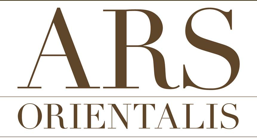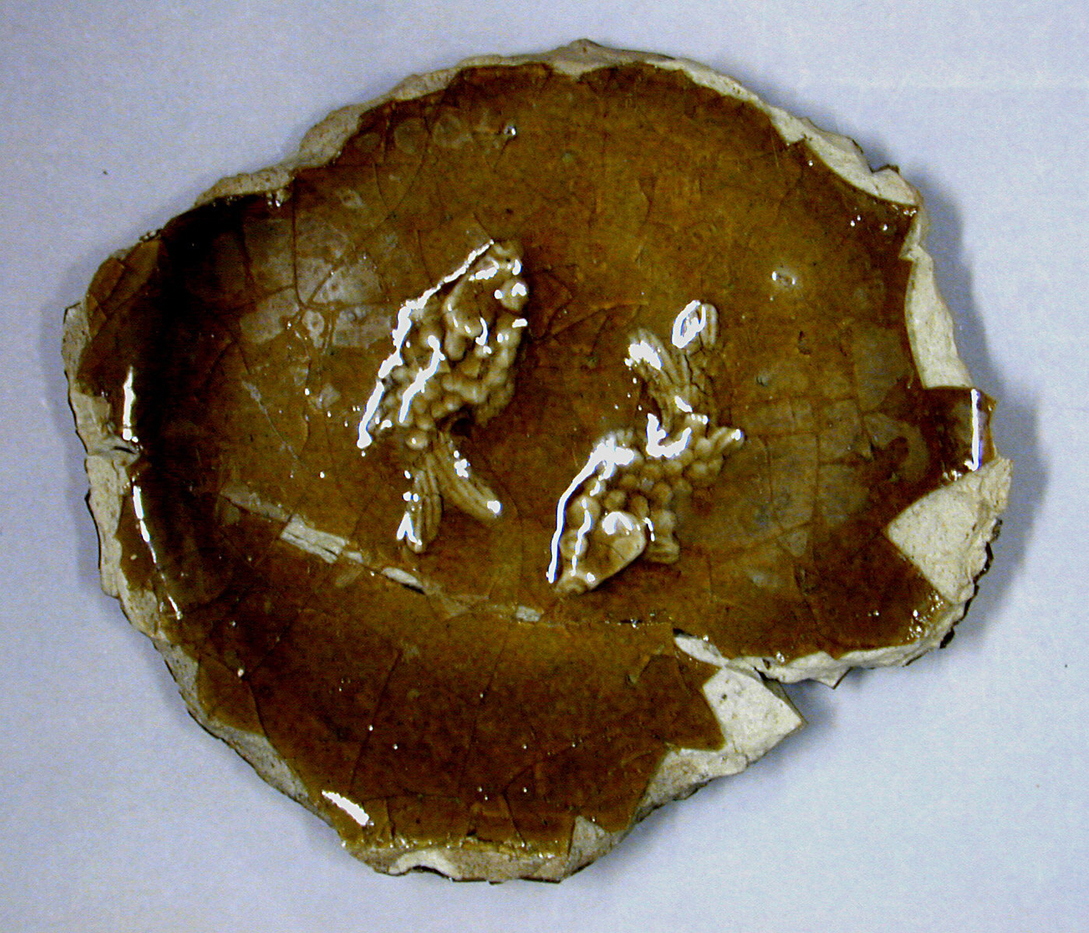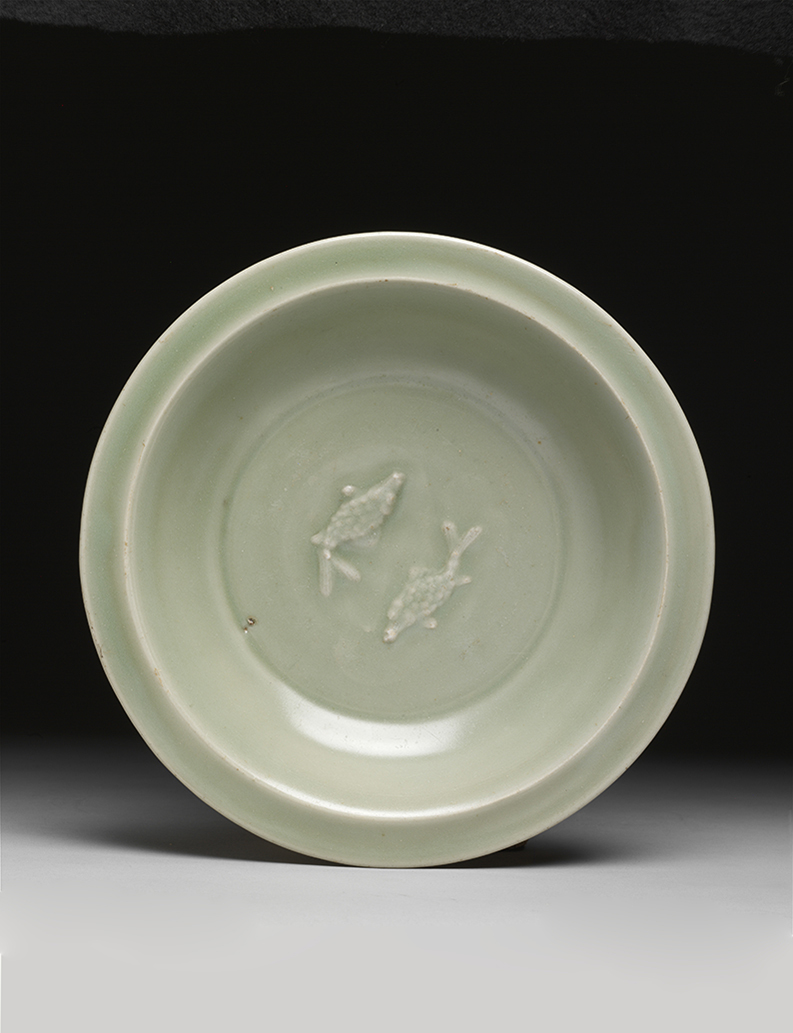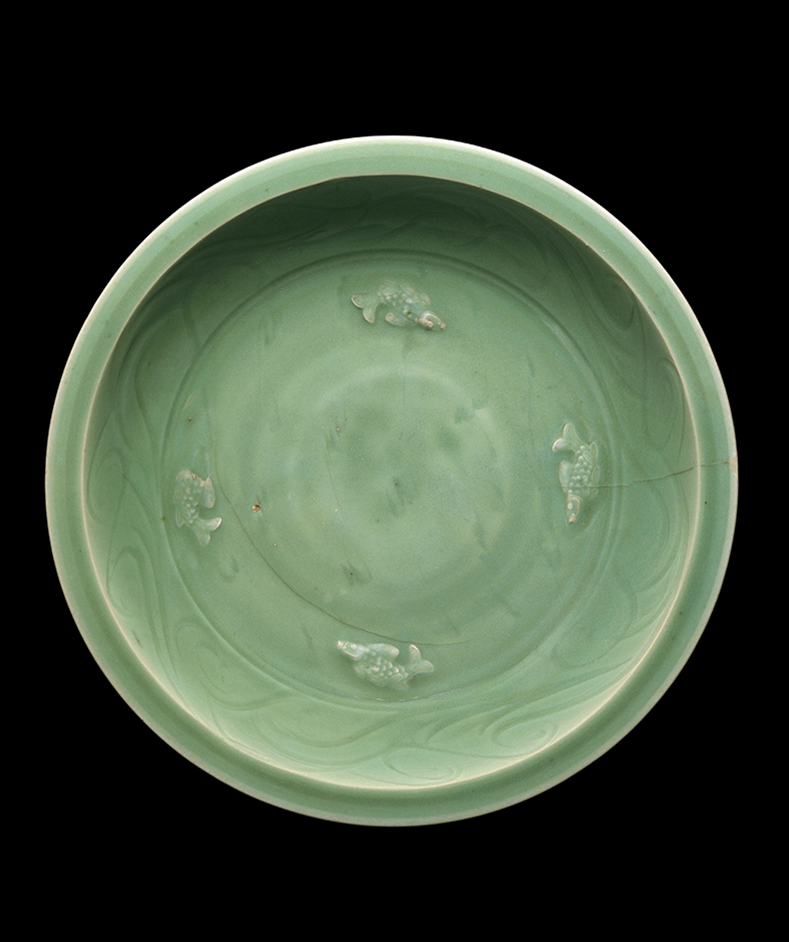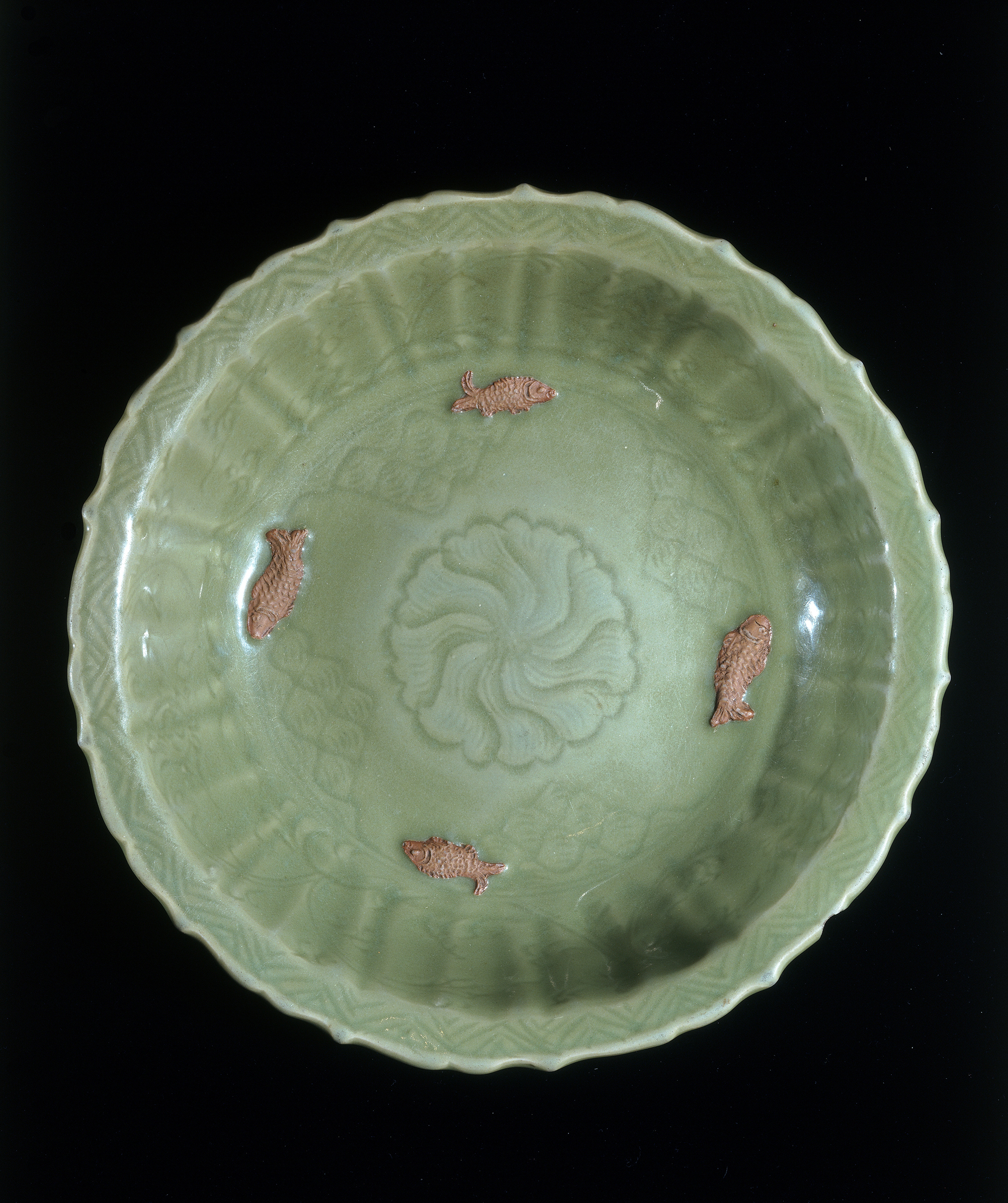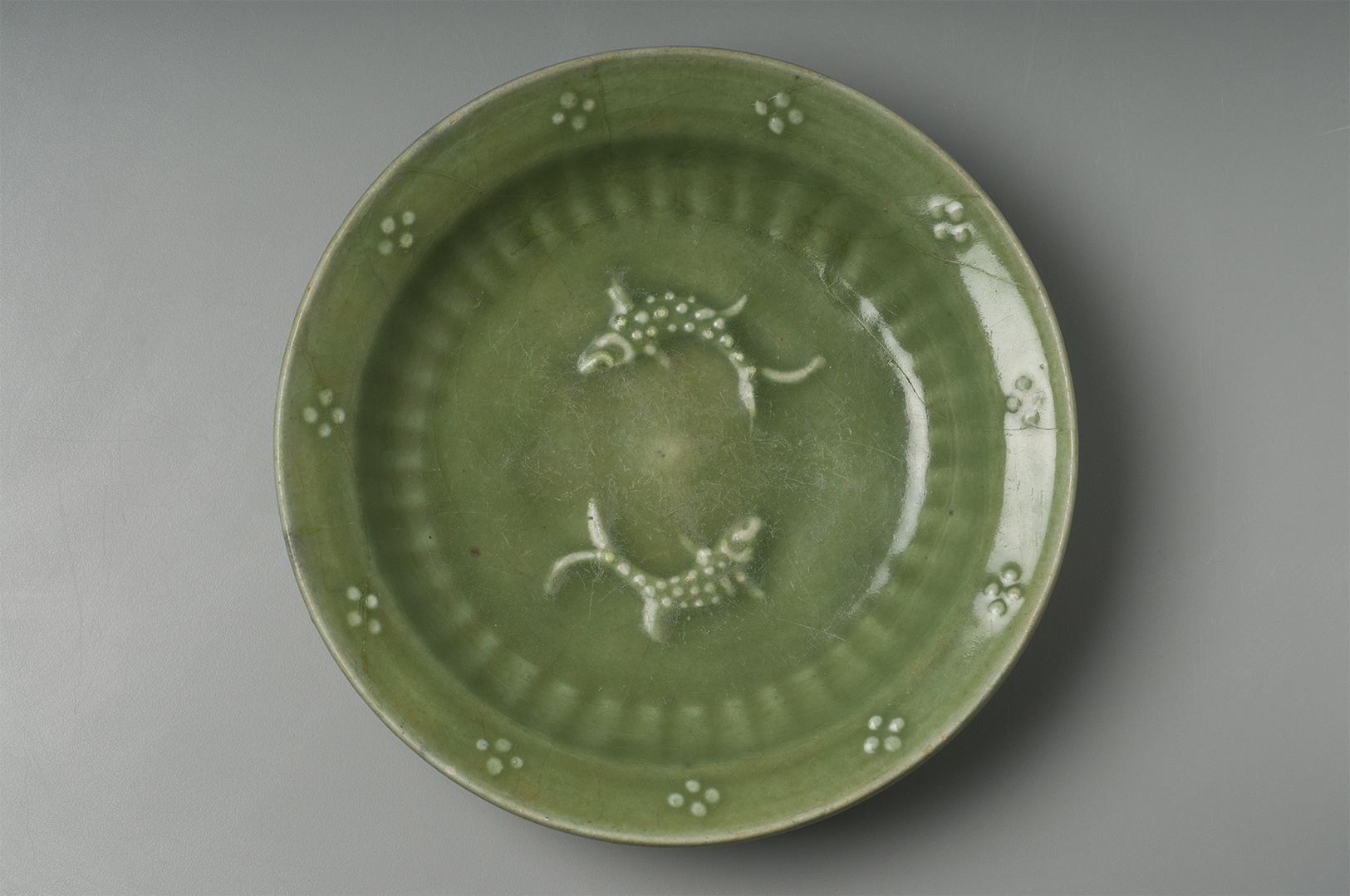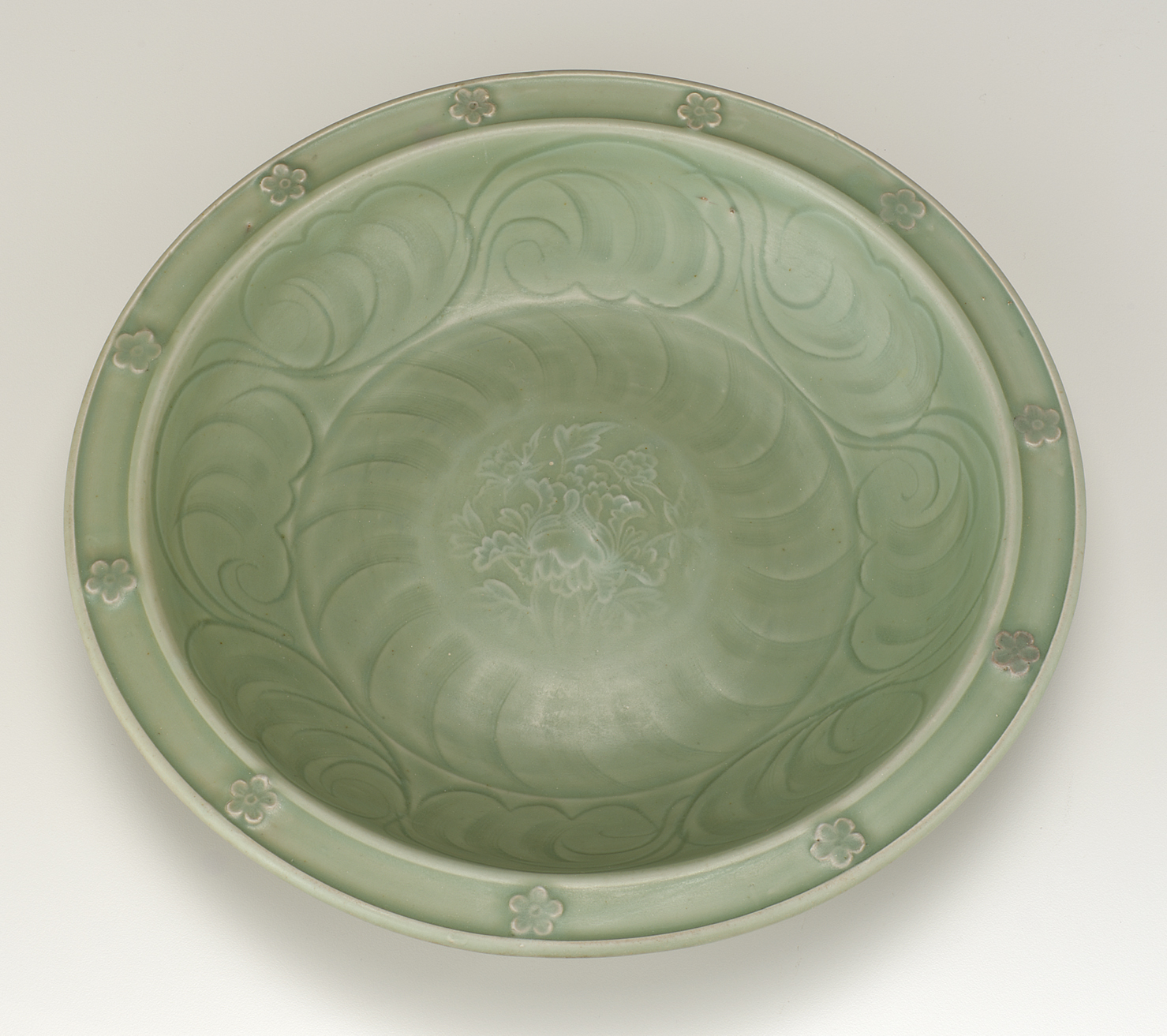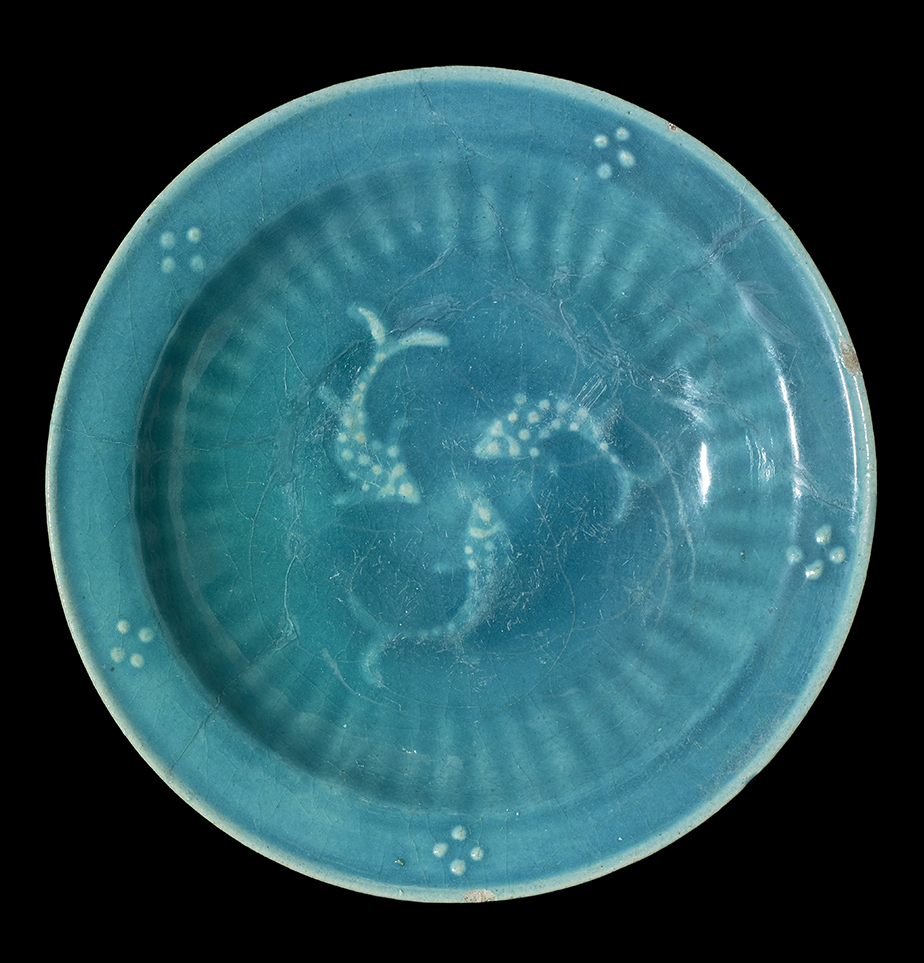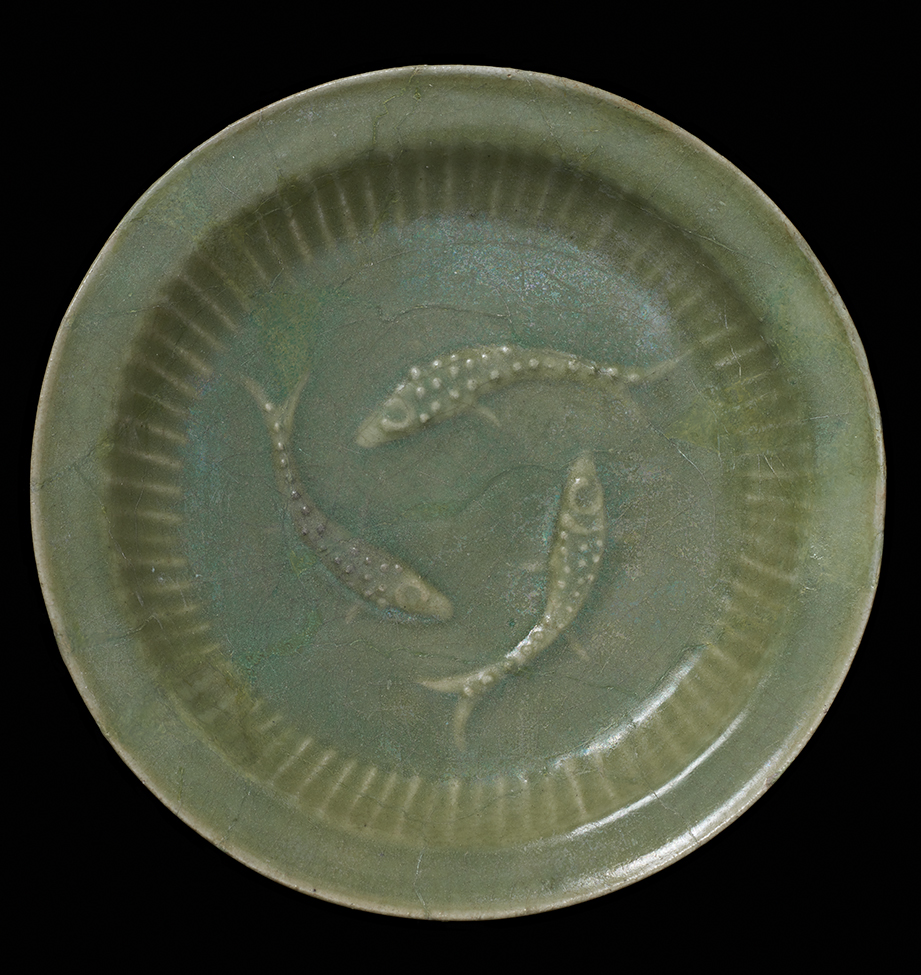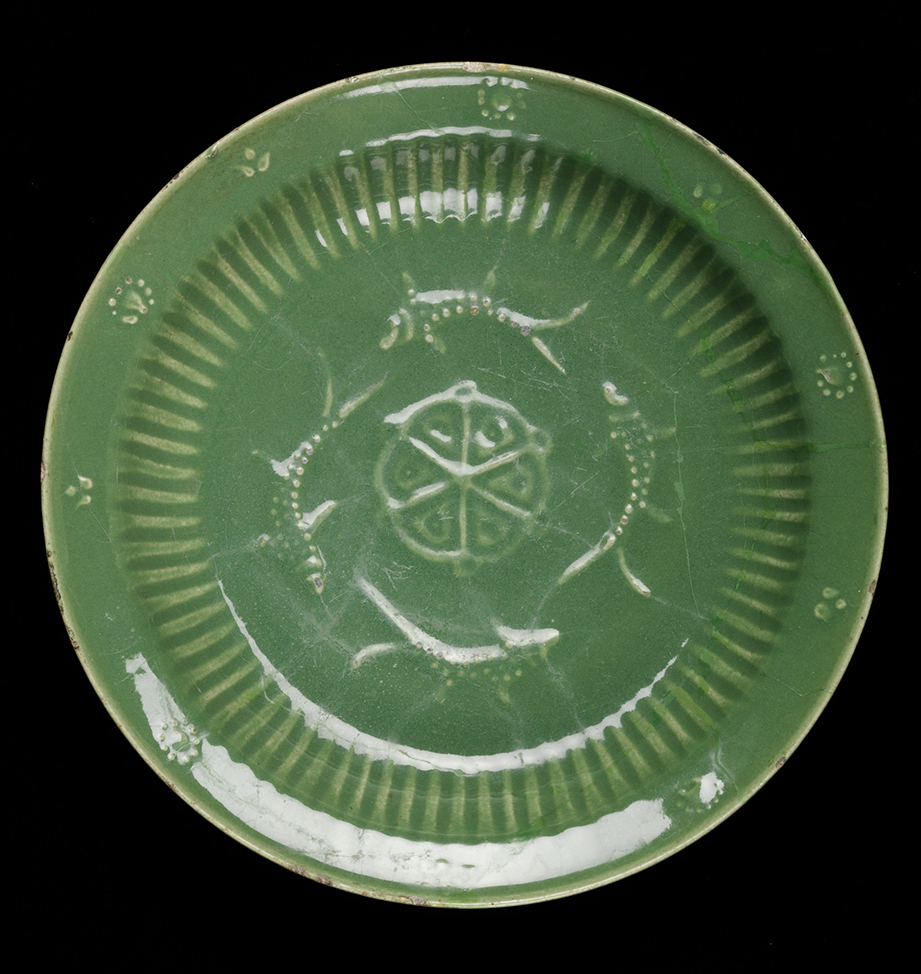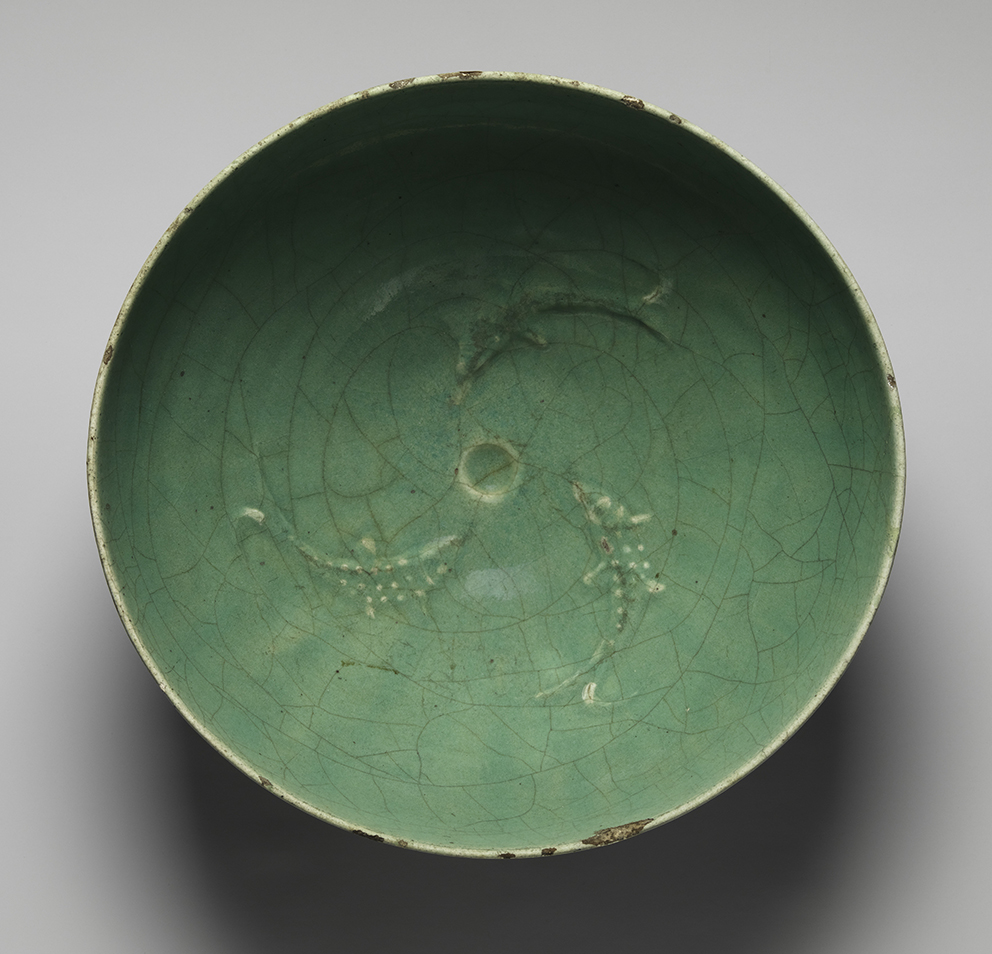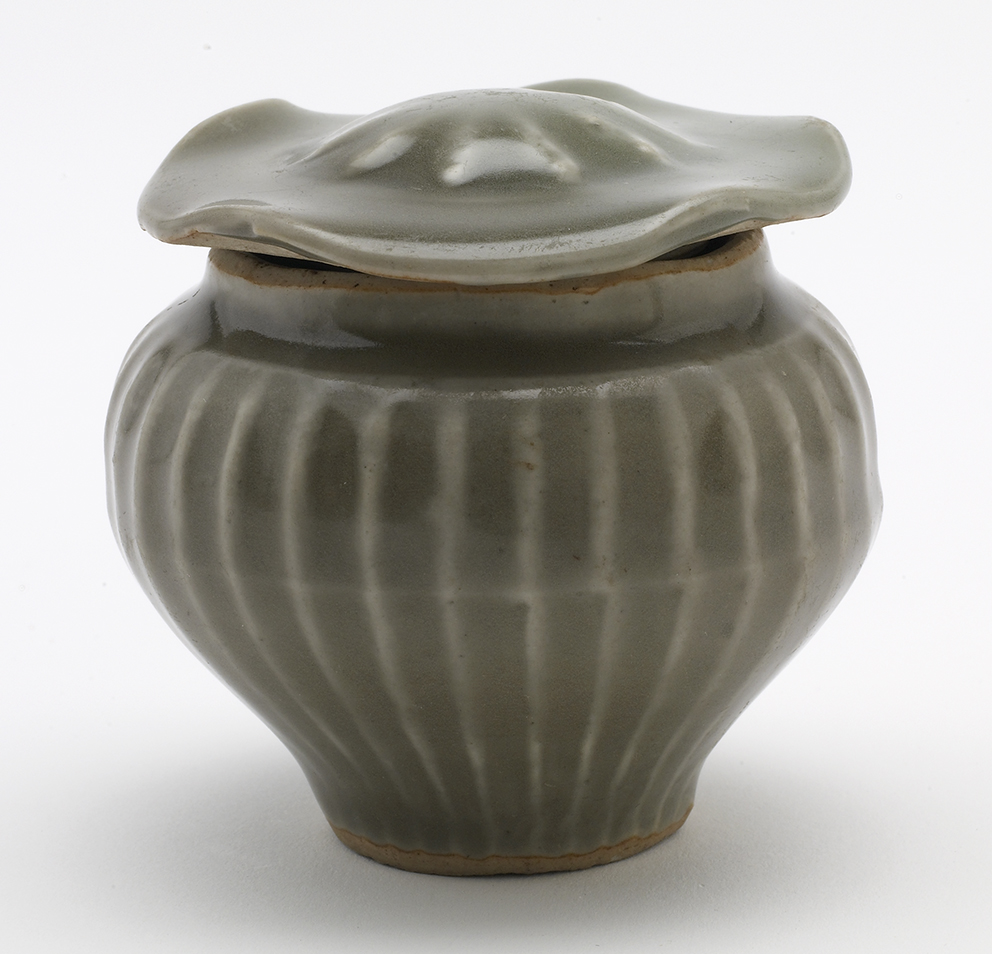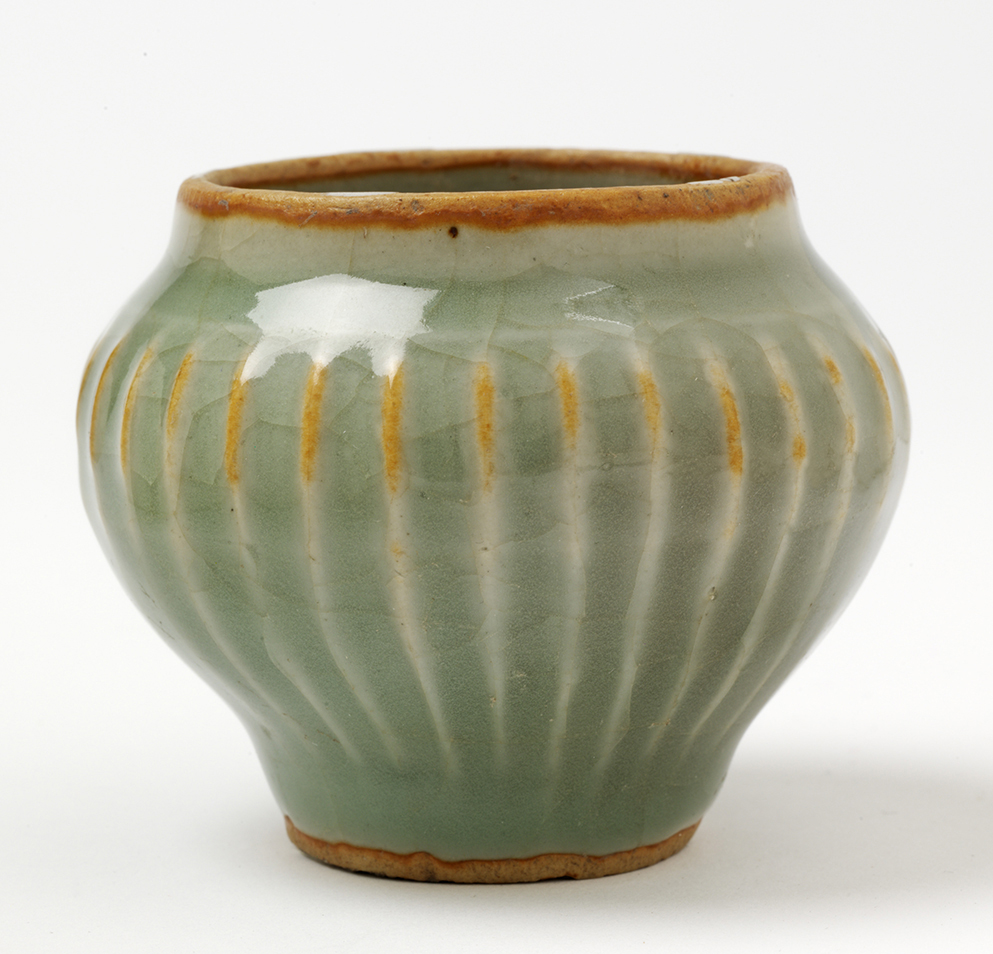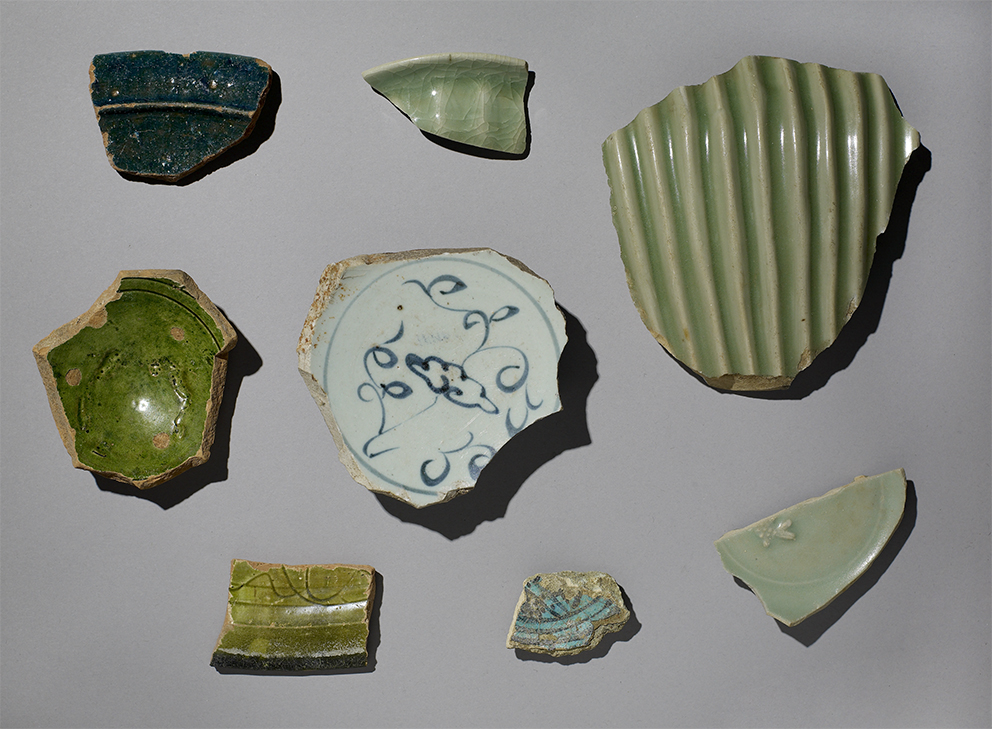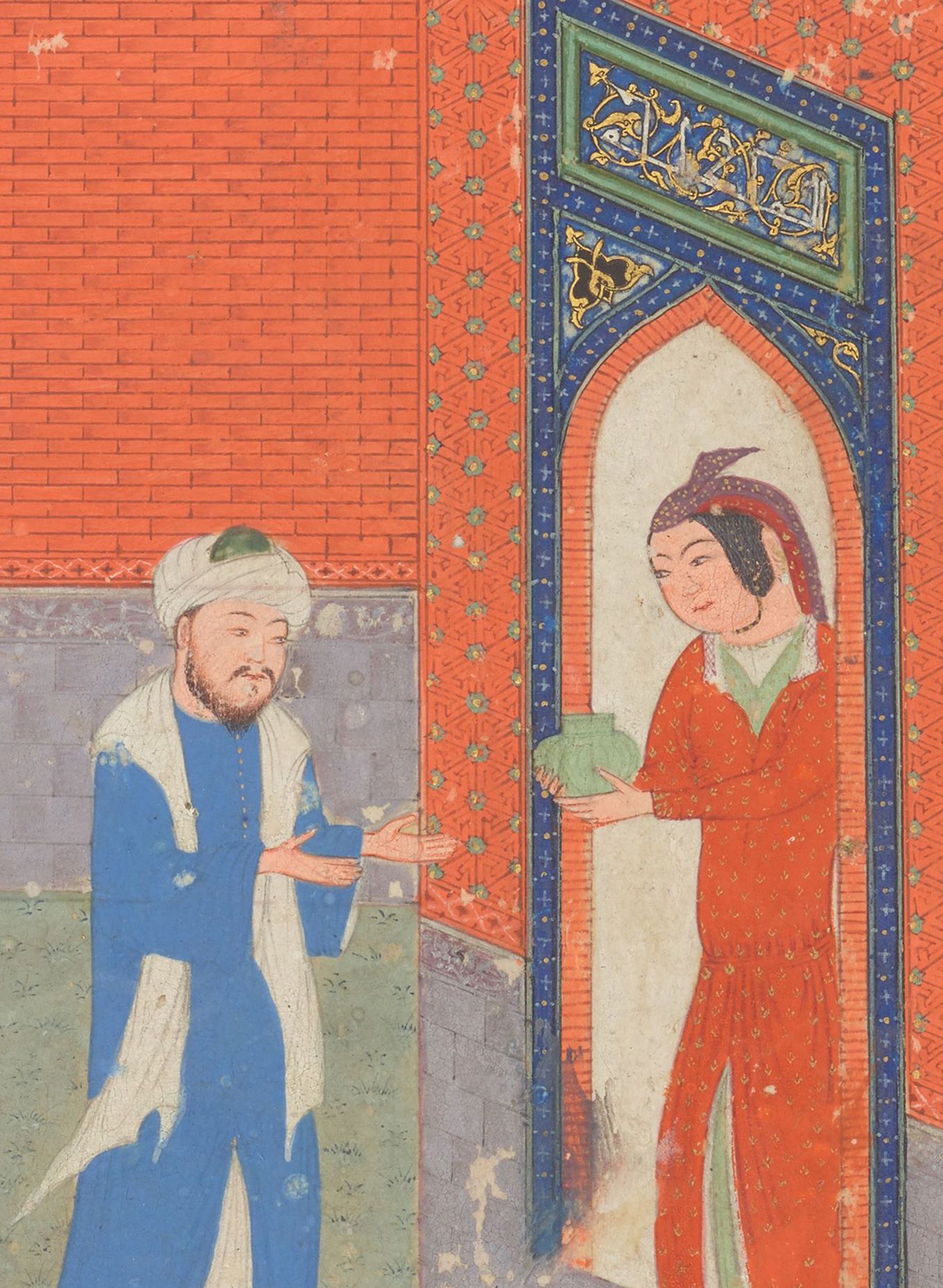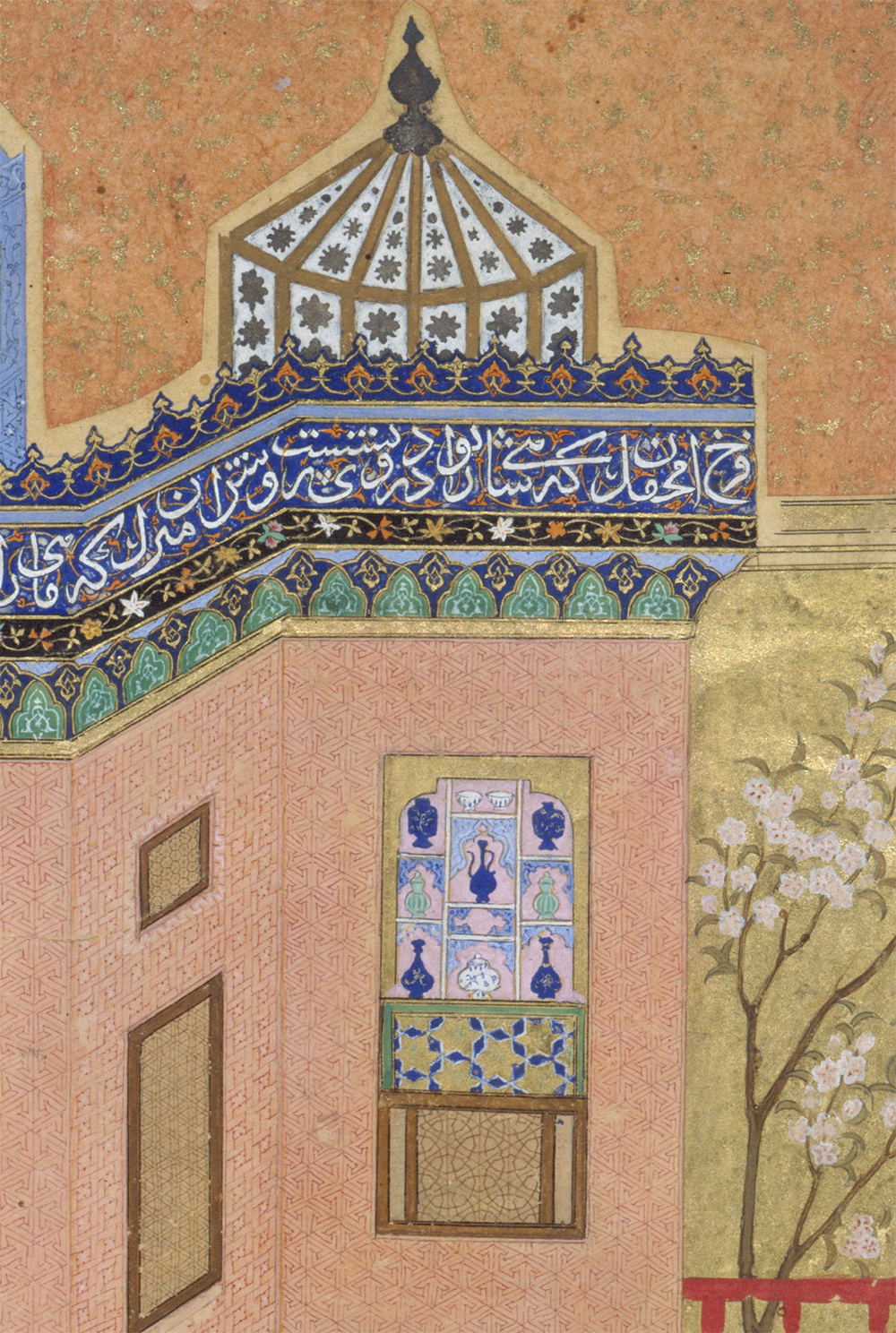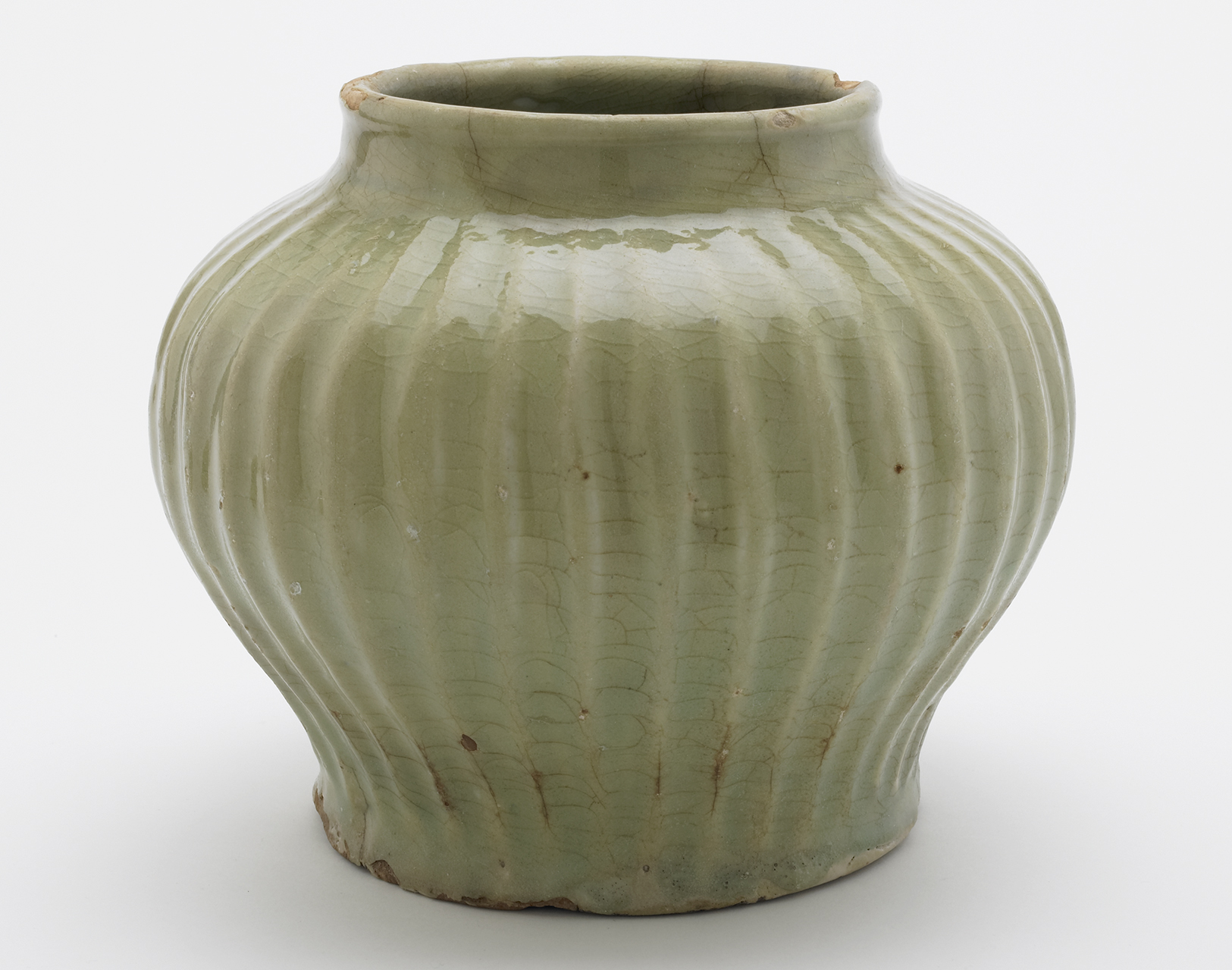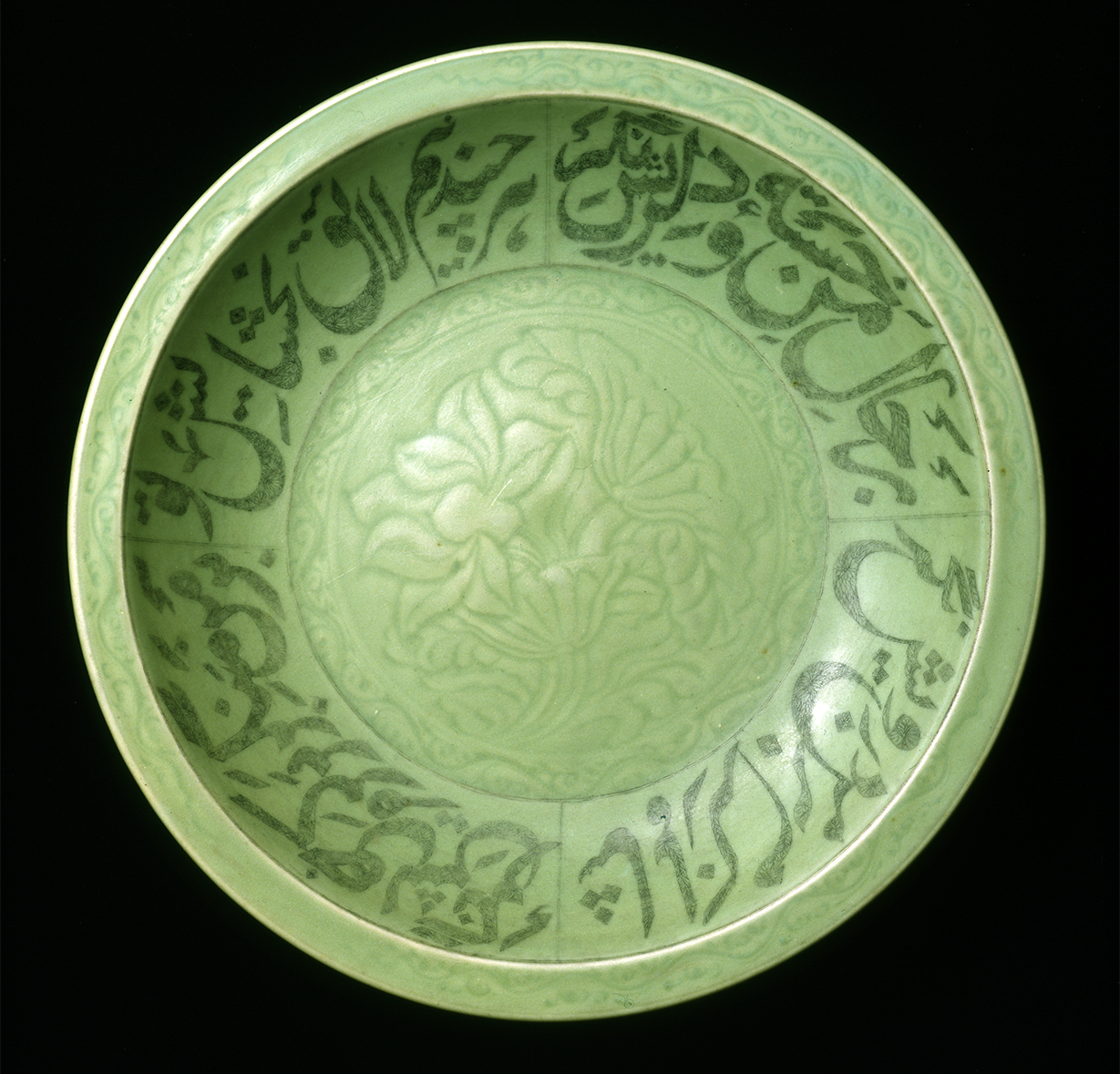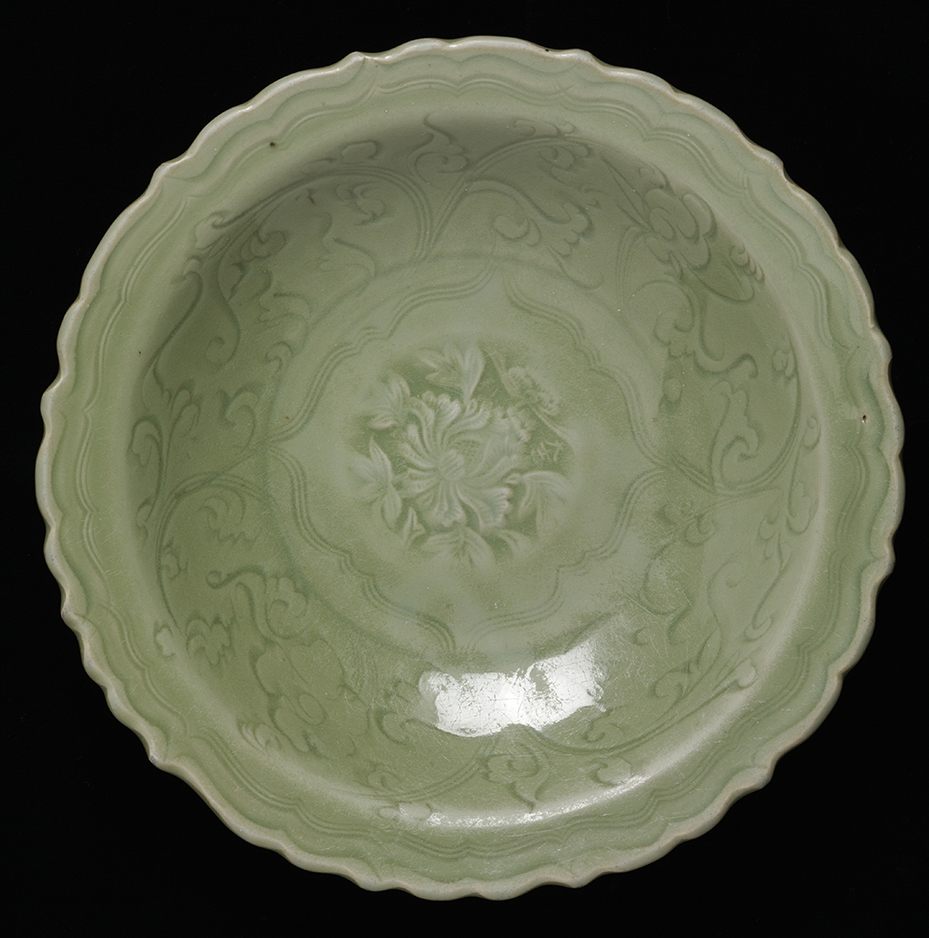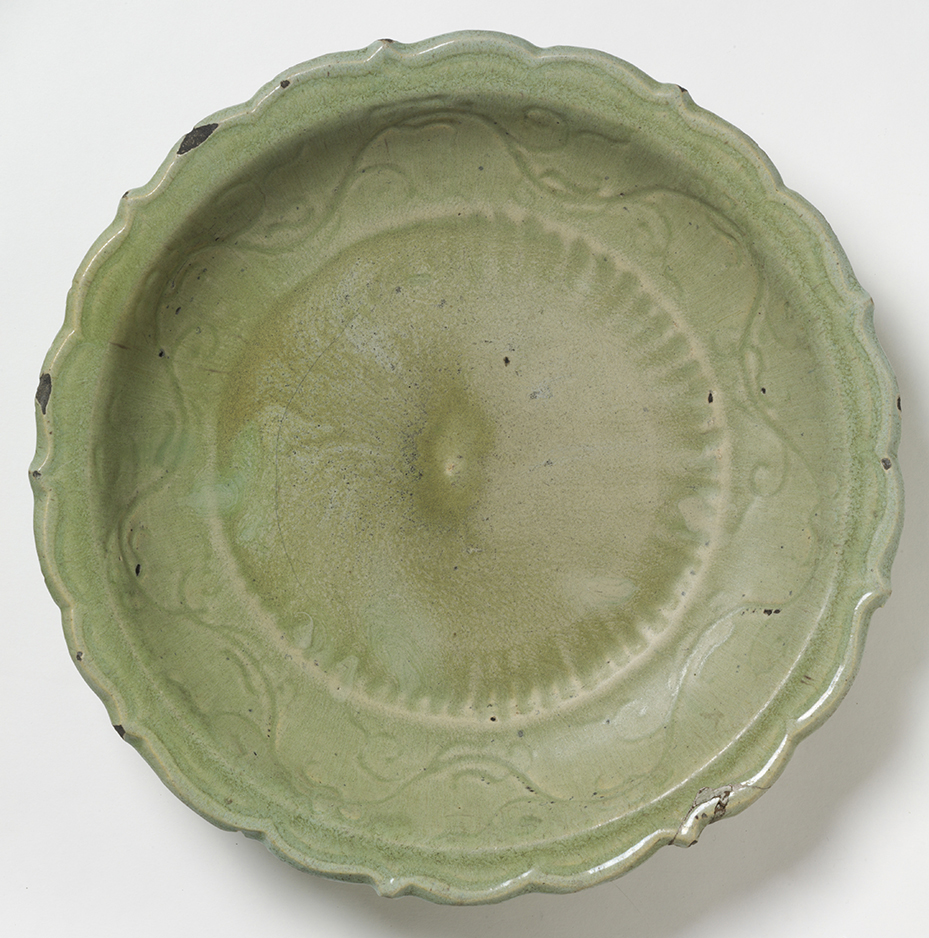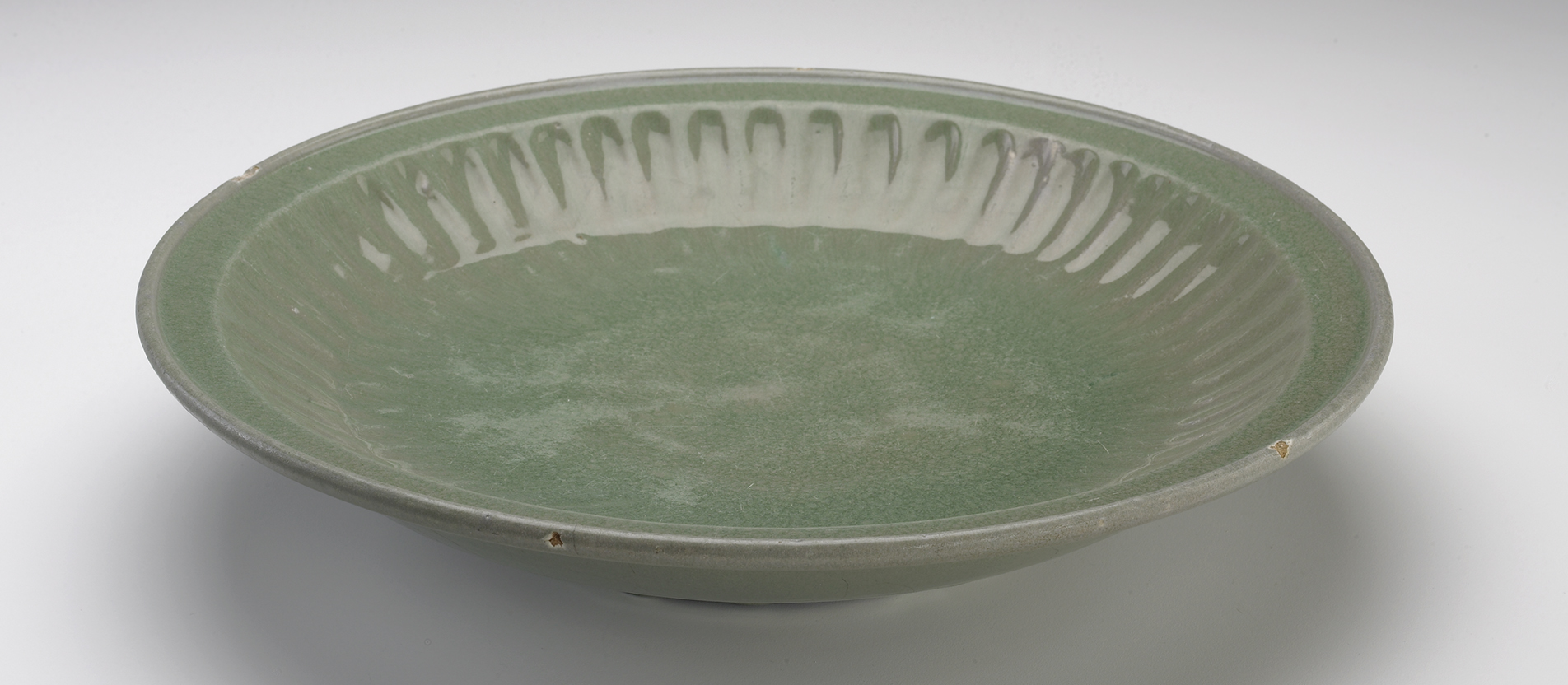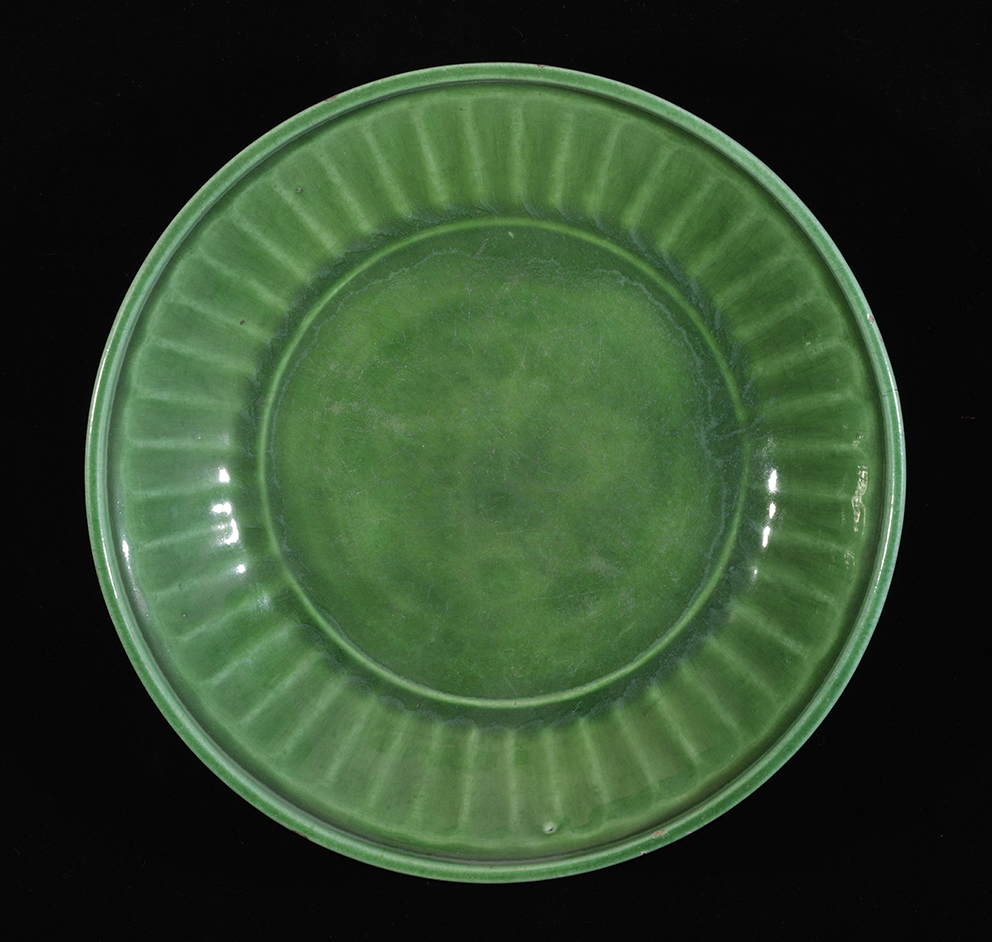They have [in China] a fine type of clay that is made into cups as delicate as glass: when held up to the light, any liquid in them can be seen through the body of the cup, even though it is of clay.
Accounts of China and India, The First Book (ca. 851)1
This brief passage is found within the travelogues published as Accounts of China and India by Abu Zayd al-Sirafi. It appears in the first book of the text, which is dated to about 851 CE and may be the earliest description of a translucent porcelaneous ware2 yet identified in a West Asian text.3 Apropos his nisba, al-Sirafi lived, at least for a time, in the important Persian Gulf port city of Siraf. This port, owing to its deep harbor, accommodated large ships from the region. They would be loaded here before setting sail for long journeys, some as far as China.4 Within these fascinating early Accounts, detailing the many ports along the way to East Asia, are stories gathered from those familiar with these long-distance voyages—ranging from the author’s feelings about the use of toilet paper to the details of sewn-plank boat construction. Among them, al-Sirafi provides us with this very early description of a type of Chinese porcelain.
Scholars have well established that various types of Chinese ceramics were imported into regions of the Islamic world5 at least as early as the ninth century.6 Evidence for the importation of Chinese ceramics exists from sites around the littoral regions of the Red Sea, Persian Gulf, and Indian Ocean, as well as from inland locations connected to those port cities. Shipwreck sites also have contributed to our understanding of the maritime transit of ceramics between East and West Asia in this early period.7 The bibliography concerning the presence of Chinese ceramics in these regions is substantial and includes archaeological evidence from sites not only across South and West Asia, but also in East and Northeast Africa. Evidence further suggests that attempts to replicate or emulate the appearance of some of these Chinese ceramic forms, either in a directly mimetic way or in a derivative mode, had an early beginning in some of these regions.8
These wares are often referred to as “imitative” or simply “copies” in the literature. It may be useful, however, to describe briefly the various approaches taken toward these imported wares, and to posit the best terminologies to describe them. Use of the terms imitative or copy may imply an attempt to reproduce the imported vessels precisely. Yet, without access to the clay-body constituent materials utilized to create porcelain (such as kaolin), and without knowledge of the high-temperature kiln technologies necessary to fire such pieces, the local West Asian and Northeast African potters were unable to achieve precise replication of the finely potted, imported porcelaneous or high-fired stonewares. What was produced in places such as West Asia and Northeast Africa were ceramics that either attempted to emulate the appearance of imported wares in a directly mimetic way—but using local materials—or ceramics that were perhaps inspired in some way by the imported wares but were unique local creations. These local potters always worked within their own repertoire of available materials and current kiln-firing technologies. Sometimes East Asian ceramic shapes were mimicked, and sometimes innovative glaze techniques were used in an attempt to duplicate the color of the fine white imported porcelain clay body or the subtle shades of celadon stonewares. In some cases, these imported wares inspired new decorative motifs. Often the idea of duplication was not a central concern of the West Asian or Northeast African potter. Utilizing his own agency, he selected certain elements from among these imported wares to incorporate into his own imaginative designs. Rather than producing purely imitative or simple copies, these potters engaged in emulation of, or drew inspiration from, Chinese and other imported ceramic wares.9
If replication—or the creation of “counterfeits”—of imported wares was the intent in some cases, it appears that early “copies” did not always fool the discerning local customer. The author al-Jahiz (776–868), who lived in Basra and Baghdad when local wares that emulated Chinese imported ceramics began to be produced, has left us this wry comment, presumably directed at the local Basra potters: “Were the ceramics of China (ghudār al-sīn) not on the face of the earth, you would not have known ceramics. What you appear to have created is below the perfection of Chinese.”10 Nevertheless, the importation of Chinese ceramics, and the production of these local interpretive wares within the broader Islamic world, continued well into the seventeenth century and later.
There are numerous studies of the emulation of Chinese wares within the Islamic world, an activity that had its beginning as early as the ninth century. The preponderance of scholarship concerning regional practices, however, has focused on imitations and interpretations of blue-and-white East Asian ceramics in later periods.11 Less attention has been given to so-called celadon wares, which were among the most popular East Asian ceramics, appreciated in
West Asia, South Asia, and East and Northeast Africa.12 Commercial creation and circulation of certain types of Chinese celadon wares began as early as the Tang period (618–907), but began to decline with the rise in production and popularity of blue-and-white porcelains, primarily produced at the kilns of Jingdezhen, beginning in the fourteenth century.13 By the sixteenth century, celadon production in China had decreased.14
Recent scholarship has begun to take notice of the circulation, reception, collection, and emulation of these primarily green-glazed wares.15 Witness a large-scale exhibition held at the Palace Museum in Beijing in 2019, and its hefty four-volume catalogue.16 This exhibition focused on a close examination of celadon wares and presented nearly nine hundred ceramic works drawn from forty-two museum collections around the globe. One of the volumes of this catalogue is devoted entirely to emulative wares and includes a number of examples produced in the Islamic world. Within the field of Islamic art history and archaeology, some recent scholarship on regional emulations of imported celadon wares has been published.17 For example, an article by Rosalind Wade Haddon concerns primarily Mamluk-period (1250–1517) emulative celadons but also looks at examples from Yemen and elsewhere.18 Véronique François studied local imitation “celadons” uncovered at the excavations of the citadel in Damascus, Syria.19 More recently, Małgorzata Redlak, Amelia Macioszek, and Valentina Vezzoli each have published research concerning imports of Chinese ceramics and their “imitations” uncovered in sites in Egypt.20 Further information on Mamluk-period celadon “copies” and an informative scientific analysis of the techniques, and potential dangers, of their manufacture has also been published by Nigel Wood and Chris Doherty.21
While these publications have focused primarily on excavations and examples found in Northeast Africa, this essay will open further discussion and exploration into textual and physical ceramic evidence originating primarily from Iran.22 Some limited scholarship already exists concerning emulative wares in these regions, but it is hoped that this essay will encourage further interest and broader investigation into these materials.23 Beginning with a review of some of the textual evidence concerning the importation of Chinese celadon wares in West Asia— including an examination of the various terminologies utilized to describe celadon (or “green”) ceramics—this essay will then center a number of East Asian and related West Asian “celadon” pieces in the collection of the Freer Gallery of Art at the Smithsonian’s National Museum of Asian Art (NMAA).These examples will be used as a springboard for discussions of related ceramics and visual evidence. While focused primarily on West Asian, specifically Iranian, materials, the discussion here is purposefully wide ranging, in order to illuminate connectivities over time and across various spaces of the broader Islamic world.
Terminologies and Materialities
“Celadon”
The term celadon has been applied to a wide range of ceramic wares produced in East Asia and elsewhere. The Oxford English Dictionary cites the etymology of the term as stemming from the French word céladon and suggests that the color was named after the character of a romantic shepherd with the name of Céladon who appears in the novel L’Astrée, written by Honore d’Urfé (1568–1625).24 Apparently, the character was known to wear gray-green clothing,25 hence the application of the term to various lighter greenish hues, including the “sea-green” color. Various other theories also have been proposed over the years, including one that involves the Ayyubid ruler Salah al-Din (r. 1174–1193). This version suggests that the term celadon is a variation or corruption of Salah al-Din, who is reported to have sent a caravan of treasured items to Nur al-Din (r. 1146–1174) in 1171 that included some forty pieces of Chinese ceramics.26 Whatever the ultimate origin of the term, it has been used to refer to a variety of ceramic types.
Although sometimes grouped together under this generic and somewhat problematic term, so-called celadon wares were produced over a number of centuries, at a number of different kiln sites, and in a number of different countries.27 In China, the term qingci has been used to refer to the wide range of “celadon” wares, but often such pieces are referred to utilizing more precise terms, typically the name of the kiln sites where they originate, with even more specific terms being applied to different products from the same kiln. Some scholars have advocated for the use of the term greenware for these ceramics. However, while the term celadon typically brings to mind a minty, sea-green color, a wide range of hues are possible, ranging from a dark greenish-brown color through a range of greenish-grays to a delicate light blue. Even wares produced at the same kiln site, using the same clay body and constituent glazes, can exhibit a range of hues. This is a result of (usually controlled) variations in the length and temperature of the firing: “Celadon glazes can be almost blue when they are underfired. . . . But, when such a glaze is fired progressively higher, it becomes greener in hue, grows more transparent, gets thinner, reacts with the body and generally shifts in color toward warmer tones.”28 These varying tones are the result of the glaze composition reacting with the clay body, which typically contains a certain amount of iron oxide, combined with variables in the firing process. In addition to the iron present in the clay body, the glazes utilized in the production of celadon ceramics also typically contain some level of iron-based colorant.29 As Chinese potters understood these components and their possible interactions, they could produce a range of colors, glaze thicknesses, and other variations. For this reason, and for the sake of simplicity, the more generic term celadon (instead of greenware) will be used throughout this essay, with an acknowledgment of its problematic aspects. It also should be noted that in some publications and online resources, celadons are sometimes referred to as porcelains. Many of the pieces that will be discussed here would be best categorized as stoneware, however, which is fired at a slightly lower temperature than porcelain and utilizes different materials for the clay body.
Among the earliest wares referred to as “celadons” in the scholarly literature are Yue ceramics, produced in the Tang and early Song (960–1279) period in Zhejiang province in China, some created around the Shanglin Lake area.30 These Yue wares were exported from an early date, with fragments found in excavations at the Abbasid city of Samarra in present-day Iraq and other regions of the Persian Gulf and Indian Ocean world,31 including excavations at Fustat, Egypt.32 While Yue wares were produced only into the early Song period, celadon wares continued to be produced in the province of Zhejiang in the subsequent centuries. The focus below will be on those ceramics produced primarily during the later Song, Yuan (1279–1368), and Ming (1368–1644) periods at the Longquan kilns in the Zhejiang province in China. While these ceramics are typically referred to as “Longquan celadon,” multiple kiln sites were dispersed across Zhejiang, and Longquan was just one of the many locations where these wares were produced. Today, these so-called Longquan kilns, many centered around the town of Dayao, have been listed as a tentative UNESCO cultural heritage site.33 They were the sites of production of wares for domestic consumption as well as for export. Evidence of the massive export production in this area may be seen in the veritable hillsides of celadon sherds still extant in the region. Exported ceramics (and fragmentary pieces) produced at these sites have been found in Japan, the Philippines, and South and Southeast Asia, across West Asia, and in East and Northeast Africa.34 Prior to the meteoric rise in popularity of blue-and-white wares, celadons enjoyed active trade in the regions of the Red Sea, the Persian Gulf, and the Indian Ocean—including much of West Asia—for at least six centuries.35 The high point of production and exportation of Longquan wares ranged from the thirteenth into the fifteenth century, but export finds began to taper off just as blue-and-white wares began their rise in popularity, both as products of domestic consumption and as articles of international trade.
The popularity of these porcelains and specifically celadon wares may have been due not only to their aesthetic appeal but also to their supposed ability to detect poison. According to tradition, these ceramics would break or change color upon contact with poisonous substances. A Persian ceramic treatise written in the late twelfth century mentions that if poisoned food was placed in porcelain, the vessel would “sweat.”36 Writing in the Ilkhanid period (1256–1335), the well-known Persian polymath and scientist Nasir al-Din Tusi (1201–1274) also relates a similar story.37 These wares were also popular outside of Persian realms. In an article devoted to Ayyubid and Mamluk sources on pottery, Marcus Milwright relates that “the reputed alexipharmic qualities of [Chinese] celadon would have made them attractive to those involved in the treacherous world of Mamluk politics and it seems likely that the high cost of porcelain and celadon reflected the desirability of some of the[se] attributes.”38 Whether their desirability was based on their reputed protective qualities or their visual appeal, Chinese celadon wares were appreciated in various parts of the Islamic world from an early period.
Contemporary texts provide some of the earliest evidence for the arrival, reception, and appreciation of these green-glazed Chinese wares. The first step in expanding our discussion of the reception, and the imitation, of celadon wares in the Islamic world is to deepen our understanding of the myriad terms used to refer to them, and to further refine our interpretation of those terms. Putting aside discussions of more generic Arabic, Persian, and Turkish terms for Chinese porcelains, the first half of this essay will focus on terms that likely refer specifically to green-glazed Chinese “celadon” wares.39 While the focus here is on terms used in texts from the Persian sphere, I also bring in other relevant references, in an effort to cut across earlier siloed studies.
Mishmishī مشمشي
One of the earliest references to what may be Chinese celadon wares is found in the writings of the eleventh-century historian al-Ṯaʿalebi (961–1038). Al-Ṯaʿalebi was born in the town of Nishapur, in present-day Iran, and lived there for most of his life, although it is said that he traveled extensively. In one of his writings, Laṭāʾef al-maʿāref (The Book of Curious and Entertaining Information), he mentions Chinese ceramics, and appears to refer specifically to green-glazed wares:
The Arabs were accustomed to call “Chinese” any rare vessels and similar ware, whatever they may be, because China is particularly renowned for its precious things. And, this name is still retained by the well known China wares. . . . And, they have the transparent porcelain vessels. . . . And, the best of it is the apricot-coloured (mishmishi ), thin, clear, ringing strongly; next to this comes the cream-coloured (zabadi) of the same kind.40
His description of these wares as “ringing strongly” points to a type of imported porcelaneous or stoneware ceramic, as simple earthenware vessels will not produce a ringing sound when struck. Interestingly, he singles out the “apricot-colored” wares as being the “best” of the Chinese ceramics. In discussing this passage, Paul Kahle concluded that al-Ṯaʿalebi was likely referring to ceramics that have a color similar to that of unripe (green) apricots, perhaps describing a kind of celadon ware.41 While this interpretation may be in need of further analysis, it is possible that al-Ṯaʿalebi was referring to Yue celadon wares then arriving in West Asia.42 As some fragments of Yue wares were uncovered from excavations at the city of Nishapur, it is possible that al-Ṯaʿalebi had firsthand knowledge of such items.43 A near contemporary of al-Ṯaʿalebi, but living for the most part in Ghazni in modern-day Afghanistan, the eleventh-century author al-Biruni (973–after 1050) left a similar description of Chinese ceramics.
The best of Chinese vessels are the apricot-coloured ones (mishmishi), which are thin in substance, the pure, those with a penetrating ring, which is drawn out on striking… then the cream-coloured ones (zabadi) … and the price of a single one of them can be as much as ten dinares (ducats).44
He also compared these Chinese wares to the local ceramics being produced in the eleventh century, describing the latter as “barbaric, base and common.”45
Zaytūnī زيتوني
Another term applied to celadons is zaytūnī. The word is used in a Persian ceramic treatise written by Muhammad al-Jawhar al-Nishapuri in the late twelfth century. He describes the making of porcelain in China, and goes on to explain the best examples of the imported wares:
The best and most precious of chīnīs are those that are very lightweight, very white, translucent, and are decorated with Chinese designs, as is well known and famous; once flicked, it makes a whistle that lasts long. . . . The colour of most [chīnīs] is white and their names are of two kinds—one tends to the colour of the face, and the other to green. The one that tends to green colour is called zaytūnī. The ones that are thick, not translucent, and not decorated with Chinese designs … are not well reputed and their prices are not very high.46
Here we have a clear reference to “green” Chinese ceramics—celadons that were arriving in West Asia and being appreciated as among the “best” examples, already in the twelfth century, and the term used to describe them at that time was zaytūnī.
Even in this relatively early period, distinctions were made between different types of wares arriving from China. We find the same word used in some Ottoman sources dated to before 1587 in connection with the large collection of Chinese ceramics held at the Topkapi Palace in Istanbul.47 These sixteenth-century references to zaytūnī have been interpreted by Julian Raby as indicating celadon wares. He notes that the term zaytūnī was appropriate for green-glazed wares for two reasons. First, “because Zeytun (Arabic Zaitūn) was the Muslim name for [the Chinese port city of] Quanzhou … a major outlet for the export of celadons, since they could be ferried from the Longquan kilns to this port, largely by water. In the second place, zaitūn is the Arabic, thence Ottoman Turkish word for ‘olive,’ and zaytūnī for ‘olive-green.’”48
Indeed, the port of Quanzhou on the eastern coast of China was a major entrepot for ships sailing toward West Asia and other parts of the Persian Gulf and Indian Ocean littoral.49 It also was one of the closest ports to the Longquan kilns. The celadon ceramics created there would have been shipped down nearby rivers and overland to Quanzhou/Zaitūn and other ports along the coast to connect with visiting merchant ships.50 As cities of export sometimes lent their names to products acquired there, these olive-green celadon ceramics may have been connected to the port city of “Zaitūn” in the mind of these merchants, and thus came to be called by this name.
Martabānī مرتباني
A similar phenomenon may be observed with regard to another term sometimes applied to celadon wares—martabān or martabānī. In later (post-1578) Ottoman sources, the term merteban is used in reference to ceramics connected to the Topkapi Palace collection. Presumably this term originated with the port of Martaban on the Gulf of Pegu in Myanmar (Burma), where the ceramics may have been acquired. Martaban served at the time as an entrepot for ceramic wares exported from Myanmar (Burma), Thailand, and China.51 The term merteban (or martabān) is often applied to very large, brownish or black-glazed pots used to transport export items or to contain drinking water on ships.52 In some Ottoman documents of this period, however, it appears that the term may have also been applied to finer celadon wares.53 We have another, slightly later reference to martabān from South Asia. The Persian traveler Asad Beg Qazvini (d. 1620/21 or 1631/32) traveled to Bijapur around 1600 and describes a palace there with a room having three walls with ten niches (tāq) in each. Within each of these niches was placed martabān jars. Given the palatial setting for this display, it is unlikely that the martabān in question were roughly potted storage jars—although it is possible. More likely these were celadon wares.54
About a decade later, and about four thousand miles northwest of Bijapur, the Safavid ruler Shah ʿAbbas I (r. 1588–1629) donated his collection of Chinese porcelain to the Safavid dynastic shrine at Ardabil. The pieces were subsequently displayed there (by 1610) within an elaborate framework of niches installed in one of the spaces of the shrine, creating a chīnīkhāna or “porcelain house.”55 Among the items described in the list of approximately twelve hundred porcelains donated to the shrine are thirty-two “martabān.”56 Given the context and quality of the other fine Chinese ceramics donated to the shrine at this time, these martabān were likely fine celadon wares—and not roughly potted storage jars. Finally, one further mention is found in the writings of Antoine Galland, who, while visiting the Ottoman court in 1673, observed:
Je vis un vase d’une certaine terre verte qui vient des Indes, dont les Turcs … font un grand estime, et qu’ils acheptent bien cher à cause de la propriété qu’elle a de se romper à la presence de poison. . . . Cette terre se nomme Merdebani.57
I saw a vase of a certain green clay that comes from India. The Turks hold them in high esteem, and they purchase them at a dear price on account of their property of breaking in the presence of poison. This [green] clay is called martabānī.58
Thus, from a range of sources across the late sixteenth to seventeenth centuries, it appears that the term martabān was used in parts of the Islamic world to refer not only to large storage jars, but also to refined and highly prized “green” celadon wares.
Ghūrī غوري
Celadons continued to be appreciated in Iran in the years after Shah ʿAbbas I’s donation of Chinese ceramics to the Ardabil Shrine. One anonymous Persian source dated to 1674–75 describes several different types of Chinese porcelains available in Iran during the Safavid period (1501–1722).59 A portion of the passage has been translated as follows:
Ghuri: The value of the older ones is great; they are shimmering (abdar, lustrous), olive, and him (?)
Ghuri: The new ones are cheaper; the background is blue.60
The edited original Persian text as published by Iraj Afshar states:
غوری : کهنه را قیمت زیاد می باشد ، آبدار می باشد ، زیتونی زخیم (کذا) می باشد.
غوری : نو ارزان تر است ، بوم سبز می باشد.
Another possible translation of this passage might be:
Ghūrī: The value of the older ones may be great; they may be lustrous (ābdār)61 [and] they may be olive green (zaytūnī) [and] thick/heavy/large.62
Ghūrī: The new ones are less expensive; they may have a green (sabz) ground.
The term ghūrī here may be interpreted as referring to celadon wares,63 and it is possible that the description refers to some of the color variations seen in Longquan and other Chinese celadons. The term ābdār, for example, may refer to those having a “watery” or shimmering appearance, but by extension could also possibly refer to Longquan celadons exhibiting a more bluish appearance. This description would be especially appropriate for some earlier celadons that exhibit a delicate, light blue glaze (see fig. 2). The term zaytūnī is used elsewhere for olive-green-glazed celadons as noted above. It should be noted that in the original publication by Afshar, the full phrase appears as zaytūnī zakhīm. While this spelling of زخيم (zakhīm) was not found in the Persian dictionaries that I consulted, it is possible that the intended word was ضخيم żakhīm, which means “thick, large, or voluminous” and perhaps, “heavy.”64 Together, the combined phrase zaytūnī-ye żakhīm may refer to large or heavy celadon dishes, an appropriate description of some Longquan wares, as the dishes are well known for their large size and substantial weight. The “new” wares are described, in contrast, as being less expensive and as having a green (sabz) color. The Persian term sabz is typically applied to things having a brighter, fresher green color, like new shoots of grass. This distinction may point to a difference between the earlier olive-green wares produced at the Longquan kilns and the brighter green hues of late seventeenth-century ceramic imports, like those being produced at that time at Jingdezhen.65
The seventeenth-century Persian source above makes a careful distinction between older wares and more recent ghūrī pieces, and notes that the value of the former is great. Already at the turn of the seventeenth century, a Portuguese visitor observed the collecting and display of “antique” porcelains in niches by the local elites, including the ruler, on the Persian island of Hormuz.
I have seen in Hormuz antique porcelain from China. The principal Moors, such as the king of Hormuz … have large quantities displayed in niches in their house wall; this is the richest fashion for displaying them.66
Around the same time as the description above was written, in the 1670s, the French traveler and jeweler Jean Chardin (1643–1713) reportedly observed the use of—presumably antique— porcelaine verte at the Safavid court. He comments on the
richesse du … la vaisselle: tout est d’or massif ou de porcelaine, et il y a chez la roi une sorte de porcelaine verte, si précieuse, qu’un seul plat vaut cinq cent écus. On dit que cette porcelaine découvre le poison par un changement de couleur; mais c’est une fable: son prix vient de la beauté de sa matière, et de sa finesse, qui la rend transparent, quiqu’ épaisse de plus de deux écus.67
… richness of the dishes: they are all of solid gold, or of porcelain, and there is with the ruler a type of green porcelain so precious that a single dish would sell for five hundred écus [French coinage of the period]. They say that this porcelain detects poison by a change in color, but this is just a story. Its costliness comes from the beauty of its material, and from its fineness, which makes it transparent, even though it has the thickness of two écus.68
The term ghūrī and its variations are said to appear frequently in sources connected to South Asian and European trading factories in the seventeenth century. For example, John Cunaeus, a Dutch envoy of the East India Company in 1652, is said to have brought six antique “gory” dishes as a gift for Shah ʿAbbas II (r. 1642–1666).69 Like the word celadon, various etymological origins have been attached to the term bābāghūrī and by extension ghūrī, which are discussed at some length by Raby, who argues that—at least in some Ottoman sources—the term may actually refer to a type of white-glazed ceramic.70 Thus, while some scholars have interpreted the term bābāghūrī and its variations as a reference to celadon wares, the meaning and significance of these terms may have varied over time and from place to place. Finally, we should note that the use of the term apparently persisted well into the nineteenth century. Daniel Fouquet, in a 1901 publication, mentions that celadons were known as el-Ghourieh in Cairo’s bazaars.71
Clearly, it is difficult to draw definitive conclusions concerning the meanings of the above terms; further study may permit a more precise interpretation of these and other surviving textual references. Only references relating to and specifically mentioning color, however, are reliable indicators. While any and all of the words discussed above may have been utilized to refer to celadon wares, the terms should be approached with some caution as they may have held different meanings for different people, at different times and places.
Emulative and Interpretive Wares
Beyond the above textual evidence, another valuable source of information for the circulation and reception of Chinese wares in regions of the Islamic world is the existence of local emulative wares. These “celadon” wares often speak to a deep familiarity with Longquan and other East Asian celadon wares that were eagerly imported and eventually emulated and interpreted by some local potters, especially in Northeast Africa and West Asia. The NMAA collections contain examples of not only East Asian celadons but also their “Islamic” emulative counterparts. The second half of this essay will explore some of these and other related examples. While a wide range of emulative celadons have been identified, this discussion will be limited to an examination of only a few forms, where the Chinese inspirations are easily identified; this is a first step toward a broader study of imported celadons and a methodical approach to identifying a range of local emulative, or interpretive, “celadon” wares.72 The wares made in emulation of these Chinese celadon pieces are often covered in a range of greenish-hued or sometimes bluish-turquoise glazes. As noted above, the potters who created these local emulative wares typically did not have access to the same types of clay as the Chinese potters, or to the high-temperature kiln technology that was then utilized in China. Therefore, while the Chinese celadon pieces are typically high-fired semivitreous stoneware, the local emulative wares are created from local clay typologies, typically fired at lower temperatures and using different glaze constituents.
Fish Decor
The NMAA’s Freer study collection holds a fragment of a Song-period brownish-green-glazed celadon dish with molded fish decor on its interior (fig. 1).73 Examples of celadon ceramics displaying similar motifs are held in collections around the world, with a majority of examples dating from the Song and Yuan periods. Similar dishes decorated with paired or multiple fish were produced in a variety of celadon glazes, ranging from a light delicate blue (fig. 2) and the more typical gray-green (fig. 3) to the darker, somewhat mottled brownish color seen in figure 1. Numerous variations on this decorative theme exist, from a simple pair of centered fish covered with the same glaze as the body of the dish to multiple fish placed as if swimming around the interior of the dish or bowl (fig. 4). Sometimes molded fish were applied, unglazed, to the bottom of the dish. During the firing, these unglazed fish adhered to the glazed dish below, and the iron in the unglazed clay body oxidized in the kiln, turning the fish bright red and forming a nice contrast with the celadon color of the dish (fig. 5). The placement of fish within a dish with a fluted cavetto, a foliated rim, and/or interior floral decor gives the suggestion of fish swimming within an upturned lotus leaf (fig. 6), or among blossoming flowers in a lotus pond.
In the Chinese context, the motif of paired fish holds special significance. The Chinese word for fish (yu) is a homophone with another Chinese word for abundance and affluence. According to popular tradition, the appearance of paired fish also may be interpreted as a symbol of marital bliss, fertility, and conjugal happiness. Another rebus that may be represented through the swimming fish is yu shui he xie (may you be as harmonious as fish and water). Finally, the popular verse jin yu man tang (may gold and jade fill your house) can also be expressed using the homophonic and punning imagery of “gold fish, full pond.” The unglazed red fish in the bottom of some of these green glazed bowls suggest a pond full of “gold” fish. While the green color of the dish has associations with spring, vitality, and growth, the red/gold color of the unglazed applied fish has connotations of happiness and good fortune, wealth and success. Thus, these dishes, especially those depicting unglazed gold fish swimming within a celadon pond, may contain many layers of meaning in the East Asian context.74
Numerous examples of this type of dish with fish decor have been unearthed in excavations across the lands bordering the Red Sea, Persian Gulf, and Indian Ocean, including interior regions of East Africa. One such piece held in the British Museum is said to have been found in Khartoum, in present-day Sudan (fig. 4).75 Others have been uncovered in excavations of the Northeast African city of Fustat (now part of modern-day Cairo).76 In addition to these imports, a number of local emulative wares of this type have been identified. Some follow the Chinese celadon “originals” very closely, while others are more interpretive, exhibiting a number of variations. Many of these local emulative wares also present pairs of molded fish motifs in the center of the dish or bowl. Whether the significance of the paired fish as understood in Chinese tradition was recognized in these regions is unclear. It is likely that the placement of these fish motifs simply evoked an association with water, or other liquids, that may have been contained within them. The presence of fish designs in the bottom of vessels created in the Islamic world was not a new concept. Indeed, fish decor is among the oldest motifs to be utilized on ceramics, appearing in many cultures.77 But a side-by-side comparison of some of the examples discussed here strongly suggests inspiration taken from imported Chinese celadons, specifically those made in the Song and Yuan periods at the kilns in and around Longquan.78
A well-preserved example, attributed to Ilkhanid Iran, is held today in the Harvard Art Museums (fig. 7) and presents two “swimming” fish with dotted scales, within a green-glazed dish with a fluted cavetto.79 In these local emulative examples, the molded scales of the fish sometimes appear more as dots than as scales. Also, the fish on the local wares are often elongated with extended tail fins and display a more elegant and playful movement. These bowls often have groupings of dots along the rim that may be intended to replicate the small, molded flowers sometimes applied to the rim of Longquan pieces. An example of a Chinese celadon dish with fish designs on the base and applied floral decor along the rim is held in the British Museum.80 Other types of Longquan dishes, such as an example in the NMAA’s Freer collection, display an even more stylized motif, composed of five “dots” representing flower petals along the rim (fig. 8). Such motifs may have been the inspiration for the simplified dots that appear along the rims of some Persian and Egyptian emulative celadon wares. The range of sizes of these local pieces (most around 22 centimeters in diameter) also compares well with those of Chinese origin.
The Harvard piece is attributed to ceramic artists working in fourteenth-century Iran, while similar works may have been made by potters working in Egypt around the same time.81 As noted above, excavations at Fustat and other areas of Egypt have revealed large numbers of imported Chinese celadon wares that likely arrived during the Mamluk period. It seems that Mamluk rulers and other elites in the region collected Chinese celadon wares and porcelains, which sometimes were used when entertaining foreign dignitaries and as a regular form of cultural diplomacy.82 Documentation exists, for example, of a gift of porcelain wares from the Mamluk sultan Qaitbay (r. 1468–1496) to the Florentine leader Lorenzo de’ Medici (1449–1492). At least one large celadon basin today in the Museo degli Argenti in Florence has been identified as likely having been part of that gift.83 In fact, even the Mamluks themselves reportedly received porcelains as political gifts from regional powers, such as the Rasulid rulers of Yemen (r. 1229–1454).84
Mamluk potters made a range of emulative celadon wares, among them perhaps a piece in the British Museum with similar fish decor, a fluted cavetto, and groupings of dots around the rim.85 This and another piece in that collection, however, are covered with a more vibrant turquoise glaze, which appears to shift with changing lighting conditions.86 One such piece, displaying a variant with three fish, was published recently in the Beijing celadon exhibition catalogue, where the glaze appears as a vibrant turquoise blue (fig. 9).87 Rather than swimming around the edge of the interior—as is observed on some Chinese originals—the fish on this dish turn inward, toward the center. This orientation of the fish motifs calls to mind similar configurations on the interiors of some Persian and Mamluk metalwork vessels,88 as well as the painted fish decor on other types of Ilkhanid ceramic wares,89 and thus appears to be a local interpretation. A fine, green-glazed piece in the David Collection in Copenhagen, attributed to fourteenth-century Iran also incorporates the motif of three swimming fish, but here the elegant, elongated fish swim as if chasing each other’s tails (fig. 10). A slightly later and slightly larger but similar green-glazed Iranian dish with fluted cavetto in the Victoria & Albert (V&A) collection displays four fish swimming around a central lotus-like motif, with small dotted decor along the rim (fig. 11),90 recalling the Chinese celadon in figure 5.
Other ceramic forms incorporating fish motifs were also produced in Ilkhanid territories. A number of “lotus-form” bowls survive. They typically present a motif of overlapping “petals” on their exterior, along with a relatively tall, swelling profile on a small footring, and perhaps were intended to resemble a lotus flower—or a lotus leaf—just about to open. One such bowl with overlapping petal decor on its exterior is held in the collection of the Metropolitan Museum of Art (fig. 12). On its interior, we again encounter the fish motif, with their “dotted” scales. Here they swim around a central depression in the bowl, all turning toward the center, much like the fish on the British Museum dish in figure 9. The piece is relatively large, nearly 30 centimeters in diameter, and attributed to fourteenth-century Iran. A related piece, but of a smaller diameter (16.5 centimeters), is in the Sarikhani collection.91 While some of these examples are clearly derived from Chinese models, others present a range of variations—both in color and decoration. Thus, while Chinese celadons may have been the inspiration, local potters reinterpreted these designs, introducing new elements, and reimagined them in more vibrant hues.
Guan Jars
Another Longquan celadon form, exemplified by a diminutive Chinese celadon stoneware covered jar in the NMAA’s Freer collection, was created during the Yuan period (fig. 13). The form, often referred to as a guan or kuan jar, is a shape frequently encountered among Longquan celadon wares. The body of the NMAA piece, with its vertical ribbing, was made by molding the jar in two sections that were then joined. This example is small, measuring only 8 centimeters in height. Similarly small, fourteenth- and fifteenth-century Longquan guan jars also are held by the British Museum and in other museum collections.92 Depictions of this type of jar, in varying glazes and sizes, also appear in contemporary Chinese painting. One image in a late fifteenth-century Chinese handscroll shows analogous lidded jars of various sizes and colors— some of them small, green, and likely celadon glazed.93 The Freer piece may be compared with a small Longquan jar of comparable dimensions in the V&A collection also attributed to the fourteenth century (fig. 14). This piece, which is missing its lid, is said to have been discovered in excavations in the Philippines, which speaks to the movement of these objects to Southeast Asian ports as well as all along the Indian Ocean littoral.
In fact, evidence of the export of Longquan jars of this type as far as East Africa appears in finds from the Swahili Coast. For example, some ninety celadon sherds held today in the British Museum are said to have been gathered at the site of Kilwa Kisiwani, in present-day Tanzania (fig. 15).94 At least one of these fragments appears to be from a similar ribbed guan jar. Other pieces of Longquan wares, including what may be fragments of guan jars, have been found in documented excavations along the coast of present-day Kenya.95 These pieces likely arrived on the Swahili Coast during the period of the Kilwa Sultanate (957–1513).96 This was a sultanate of Muslim rulers who controlled much of the lucrative trade along the Swahili Coast from as early as the twelfth century until the beginning of the sixteenth century. The Kilwa Sultanate only declined after the Portuguese invasions of several East African ports in the early sixteenth century. Kilwa Kisiwani was the prosperous capital of the sultanate for several centuries, serving as an active exchange center for the exporting of materials from the interior regions of Africa and the importing of items originating from as far east as China.
Kilwa and other sites along the East African coast were part of a broader network of port cities in the western Indian Ocean with connections not only to the Red Sea region, but also to the Persian Gulf, and numerous finds of eleventh-to-sixteenth-century Chinese green-glazed porcelain, much of it likely produced at the Longquan kilns, have been identified at sites all along the coasts of those regions.97 Numerous fragments of Longquan ceramics have been found, for example, on the Persian island of Hormuz in Iran. Around 1301 the port city of Hormuz moved from the land-based site of “Old Hormuz” to the island of Jarun,98 and the new island of Hormuz became the center of the Kingdom of Hormuz. By the mid-fifteenth century, this kingdom controlled not only the island, but also coastal regions on the Arabian Peninsula, including Julfar (present-day Ras al-Khaimah), as well as the nearby northern shores of the Persian Gulf. Hormuz was also a stop for the fleet of the Chinese admiral Zheng He (d. 1433 or 1435) during his voyages.99 The early fifteenth century saw the arrival of at least four official Chinese maritime expeditions in the region, which began their journey westward in the years 1414, 1417, 1421, and 1430.100 During some of these missions, the island of Hormuz at the mouth of the Persian Gulf became a principal harbor for the Chinese fleet.101 On one of the voyages that reached Hormuz, a large number of junks in the Chinese fleet were said to have spent two months there at port. It is reported that while at Hormuz in 1417, the leader of the expedition, Zheng He, was presented with lions, leopards, and horses by Persian embassies;102 it is likely that many of these ships carried considerable quantities of Chinese trade goods, including porcelains, to exchange for such tribute.103 Indeed, excavations at the island of Hormuz have revealed numerous shards of Chinese porcelains.104 While the presence of these junks put the Chinese visitors within easy reach of some principal Timurid cities, Hormuz was just one possible entry point for Longquan wares and other Chinese ceramics to find their way from the Persian Gulf north into inland cities of Iran. Over the course of the fifteenth century, there were also numerous overland embassies between Timurid Iran and East Asia that may have provided opportunities for the acquisition of early celadon wares.105
We know from eyewitness accounts that Timur (founder of the eponymous Timurid dynasty; r. 1370–1405) utilized Chinese porcelains when serving his guests. Ruy González de Clavijo, a Castilian ambassador to the court of Timur in 1403–5,106 describes a feast that Timur hosted in Samarqand for his guests, which included another ambassador who had traveled there from China:
What they thus brought before us was laid out severally on very large circular dishes of leather. . . . The slices of meat were next placed in large trencher-like basins, these some of gold and some of silver, while others were of vitrified earthenware, or else of what is known as porcelain, and these last are much esteemed and of very high price.107
Not only does Clavijo take note of the presence of porcelains at Timur’s court, but he also comments on the high monetary value that such ceramics held at that time. The presence of ambassadors from Spain and China at the feast suggests the cosmopolitan nature of Timur’s court, as is confirmed not only by his international guest list, but also by the material goods described by Clavijo at this gathering, which included porcelains and fine silks, pearls, and precious stones.
We should take note here of a painting made for Timur’s grandson Baysunghur (1397–1433) about twenty years later, at the Timurid center of Herat in 1427. Held today in the Chester Beatty Library in Dublin, it is one of the illustrations made for a copy of the Gūlistān by the Persian poet Saʿdi (d. 1291 CE) (fig. 16). This painting depicts the author receiving refreshments from a beautiful woman who holds in her hands what appears to be a small, lidless, ribbed celadon guan jar and offers it to the poet. The vessel may be an imported Longquan guan jar, perhaps one belonging to Baysunghur, the patron of the manuscript. This jar likely represents only one of the many porcelains then in circulation at the Timurid courts. A few years after this painting was made, the Timurid vizier Mir ʿAli Shir Navaʾi (d. 1501) had gathered a number of these Chinese porcelains, enough that he ordered construction of a chīnīkhāna pavilion within his gardens at Gazargah, located just outside the city of Herat, to house his collection.108 We know that Chinese porcelain vessels were collected here thanks to an account by the contemporary Persian poet Vasifi (1485–c. 1551), who describes the space as installed with a number of niches intended for the storage and possibly the display of Mir ʿAli Shir Navaʾi’s precious imported ceramics.109 In a metaphor-filled passage, Vasifi tells of a curious cat entering the pavilion and knocking some of these porcelain objects from their niches:110
On that same day, at the moment of the break of dawn, the cat of bright good morning sprung up [upon] the chīnīkhāna of the azure [lajvarda] heavens, and overturned the shining stars—[like] imperial [faghfūrī] Chinese vessels—from their heavenly niches. [At that same time,] the honorable Mir [ʿAli Shir Navaʾi] … opened the door to the chamber, [and] a cat came into the building, [and] took a leap into the niches [tāqcha-ha]—and the Chinese items that were in those niches, [the cat] knocked them down and broke them.111
The term tāqcha used within this extract may be translated as “niche.” In addition, the passage is very specific in describing the Chinese objects as being within these niches. It is notable that the metaphorical Chinese wares in question are referred to as chīnī faghfūrī. Faghfūr is a Persian form of the title “son of God,” the name typically given to the emperor of China.112 The phrase chīnī faghfūrī likely refers to “imperial” or very high-quality Chinese porcelains.113 From Vasifi’s description, one can imagine a veritable heavenly “constellation” of shining porcelains filling niches across the walls of his fifteenth-century chīnīkhāna.
A number of contemporaneous Persian manuscript paintings include images of ceramics and other vessels placed into niched display walls. At least three fifteenth-century paintings show such niched displays, including one held today in the collection of the Metropolitan Museum of Art.114 An illustration for a late fifteenth-century copy of the Mantiq al-Tayr (Language of the Birds) by the poet ʿAttar (d. 1220 CE), the painting depicts a court scene titled “The Beggar Who Professed His Love for a Prince.” Above the prince’s head, we catch a glimpse into the second floor of the palace. There, contained within niched shelving, appears a grouping of vessels, some of them perhaps meant to represent Chinese ceramics. Within two of the niches are light green, ribbed, covered jars that bear some resemblance to Longquan guan jars (fig. 17). By the end of the fifteenth century, trade in Chinese celadons had begun to wane, replaced by the rising popularity of blue-and-white wares, and thus these may represent wares produced many years earlier.
This tendency to display precious ceramics and other vessels in niches continued into the Safavid period. The Safavid ruler Shah ʿAbbas I, for example, is well known for his donation of a large number of Chinese ceramics to the Safavid dynastic shrine at Ardabil, where they were displayed in richly ornamented niches. Of the approximately twelve hundred pieces listed in the ruler’s donation, at least thirty-two are described as martabān—presumably referring to fine celadon pieces.115 Among the surviving celadon pieces are two examples of guan jars. One of these is a relatively large (34 centimeters in diameter) ribbed celadon jar, dated by John Alexander Pope to the fourteenth century.116 The other, of a similar shape and size, displays floral decor.117 Both were likely made in the Longquan kilns. Some scholars have surmised that celadon wares were “less popular” in the Safavid period, citing the smaller number of celadons in the Ardabil collection as compared to the Chinese blue-and-white wares.118 The small number, however, probably has less to do with popularity and more to do with the timing of the formation of Shah ʿAbbas I’s collection. Judging from excavated finds, the height of Longquan exports was between the thirteenth and the fifteenth centuries. By the early seventeenth century, the output of the Longquan kilns had fallen off, and the rise of blue-and-white was already well underway. The availability of high-quality, early Longquan celadons in Persia at that time would have been limited. The fourteenth-century ribbed celadon Longquan jar in Shah ʿAbbas’s collection, for example, would have been approximately two hundred years old by the time it was donated to the shrine. Other celadon wares in the Ardabil collection are also dated to the fourteenth or fifteenth century. Thus, the pieces in the Ardabil collection were likely already over one hundred years old by the time they were collected by Shah ʿAbbas I, suggesting an appreciation for rare, “antique” porcelains. Probably inspired by these imported green-glazed wares, local Safavid potters created emulative celadons in Iran during the sixteenth and seventeenth centuries The Freer collection holds a local imitation of a ribbed guan jar created in Safavid Iran in this period (fig. 18).119 This example is formed from earthenware but covered in a soft gray-green glaze, and has a diameter only slightly smaller than the guan jars in the Ardabil collection. Although created from different materials, the form and the glaze color replicate the earlier fourteenth-century Longquan wares very closely, and very effectively. This later Safavid emulative ware speaks to admiration for earlier Chinese celadons that lasted well into the seventeenth century.
Large Dishes
The reference by Chardin to the precious and very expensive “green porcelains” used at the Safavid court suggests that these were considered rare and highly treasured pieces. A large (48.5 centimeters in diameter) Chinese celadon bowl in the David Collection, a fifteenth-century product of the Longquan kilns, speaks to this appreciation. It may have been among the treasured celadons at the Safavid court, as it was inscribed—possibly sometime in the seventeenth century or later—with a Persian poem, executed in flowing nastaʾliq and naskh script around the cavetto (fig. 19).120 The poem, probably authored by the tenth- to eleventh-century Persian Sufi poet Abu Saʿid, reads:
شاها زِ کَرَم بر من درویش نِگر بر حال منِ خسته دلریش نگر هر چند نیَم لایق بخشایش تو بر من مَنِگر بر کَرَم خویش نگر
It may be translated:
O Shah—Look with generosity upon me, [a poor] dervish, Look upon my condition, [my] wretched [and] wounded heart. Although I am not worthy of your forgiveness, Look to your own generosity [and] overlook my [faults].121
Given the content of the quatrain, the lines may have been added prior to gifting or donating the dish to a person, or to a religious institution, perhaps one populated by Sufi adherents.122
Similarly large Longquan dishes are found in collections formed in Iran and other parts of the Islamic world, and appear to have been one of the most popular forms of imported Chinese celadons.123 These dishes often exhibit a fluted cavetto and/or a delicate foliate rim, sometimes combined with floral or other decor on the interior. An exceptional example of this type is the Ming-dynasty Longquan celadon stoneware dish held today in the NMAA’s Freer collection (fig. 20). This piece, dated to the early fifteenth century, is of an exceptionally large size—measuring 57.7 centimeters in diameter. While dishes of this size are remarkable, the rarest and largest examples can sometimes exceed 60 centimeters in diameter. This Freer dish has a fluted cavetto, but the cavetto of similar dishes sometimes displays carved or impressed designs, as seen on a Longquan dish in the V&A collection (fig. 21). That collection also holds a somewhat similar Safavid “copy”: a relatively large (38.7 centimeters in diameter) green-glazed dish with foliate rim and a cavetto displaying a carved meandering floral scroll. There is also the suggestion of fluting around the interior (fig. 22). The piece is described as a sixteenth-century piece produced in imitation of Longquan wares, and it is likely that earlier celadons served as models for such Safavid ceramics. The NMAA collections contains another Safavid example that emulates the appearance of a Chinese celadon original but is of smaller dimensions (40.2 centimeters in diameter) and is dated to the later seventeenth century (fig. 23). While the cavetto exhibits a typical fluted design, the interior displays an indistinct motif— vaguely resembling a dragon—in the center of the dish.
Numerous emulative “copies” of large Longquan dishes were produced in Safavid Iran, although the precise dating of these pieces remains unresolved.124 One example—a simply designed piece but with a lovely soft-green glaze—is held today in the V&A collection.125 Two other emulative wares—with fluted cavettos, foliate rims, and plain interiors—are to be found in the al-Sabah collection.126 One observes among some of these later Safavid wares, however, a striking variation in the color of the glazes. A number are covered in surprisingly brightly colored glazes, in some cases a bright green and in others brilliant blue hues (figs. 24, 25).127
It should be noted that around this time, contemporary monochrome green and blue wares were also being produced at the famous Jingdezhen kilns. These wares tend to display brighter green and blue colorations than the more subtle coloring of the monochrome ceramics produced earlier at the Longquan kilns.128 It is possible that the colors of the Jingdezhen wares served as inspiration for some of these brightly colored later-Safavid “copies.”
Conclusions and Future Questions
While this essay provides an overview of some forms of local “celadon” wares produced in Iran, these are far from the only emulative—or interpretive—wares that were produced in response to the import of Chinese celadon ceramics. Witness, for example, the range of locally made lotus-form bowls and their likely Chinese inspirations.129 Scholarship awaits more comprehensive reviews of the local importation, reception, and reaction to these imported Chinese celadon wares. Ideally, such reviews would cut across the typically siloed studies that tend to focus on specific regions or periods, and take a wide-ranging view of both the imported wares and local responses across time and location. Many of the pieces discussed here are attributed to disparate sites yet share a very similar appearance. Further comparative scientific analysis of these wares may yield useful information. Beyond emulative celadon wares, one also finds local forms recast in ceramic with a celadon green glaze. For example, the Safavid “carpet weight” in the V&A collection may have been created for local use or for export to the Mughal courts in South Asia.130 One might consider what the color of this glaze signaled within the Safavid or Mughal sphere. There are also stunning reinterpretations of designs typically applied to celadon dishes, such as some of the wares produced at the Ottoman Iznik kilns.131 Future study, however, should include not only the emulation and reinterpretation of forms, hues, and motifs, but also the possible adoption of East Asian production techniques for these local “celadon” wares. A Chinese celadon bowl in the Freer collection, for example, employs the use of a chrysanthemum flower “plaque” at its center, covering a small circular hole in its base.132 A number of Mamluk emulative celadon wares uncovered in Egypt appear to make use of a similar production technique.133 Why this approach might have been taken, and how such similarities in production methods would arise, is yet another mode of interaction awaiting further study.
Celadons, and the wide-ranging reactions and responses to them, offer fascinating insights into the mechanisms of artistic exchange within and between the broader coastal (and inland) regions of the Red Sea, Persian Gulf, and Indian Ocean worlds, and East Asia. The British Museum collection alone holds Chinese celadon vessels and fragments found in port cities such as Siraf in the Persian Gulf, as well nearby Qalhat on the coast of Oman. As noted above, other fragments have been found at Kilwa and Malindi on the Swahili Coast, and also at the port of Aidhab along the western Red Sea coast, among numerous other findspots. The study of this trade in fragile celadon ceramics—primarily conducted via the maritime exchange networks— offers new vantage points onto these contacts and connections, and provides new frameworks through which to approach them. Further investigations into these celadon material “entanglements” will undoubtedly reveal new facets of the reception, collection, display, emulation, and reinterpretation of East Asian imports within the Islamic world. It may also reveal how individuals in the Islamic world viewed East Asia in earlier periods—bringing to light not only the realities but also the imaginaries associated with these and other Chinese imports. As the tenth-century traveler and storyteller al-Sirafi shares with us:
When I arrived at Siraf, I saw a ship leaving for China. Also, because of what I had heard of the majesty of the king of China and of his bountiful goodness. All this made me long to travel to these parts and see them for myself. Now I shall return from here [China] to my homeland … and I shall recount what I have witnessed of the majesty of the king and the extent of this country. I will have nothing but good to say, and I shall spare no fine word in my praise.134
Rather than being green with envy, these local potters may have viewed imported celadon wares with fascination—and as a rich source of endless inspiration for their own unique and inventive creations.
Acknowledgments
My thanks to Massumeh Farhad, Sana Mirza, Judy Lee, and Mary Cason at Ars Orientalis, for their generous assistance, careful review, and helpful suggestions. My thanks also to the peer reviewers of this article for their insightful comments. I am grateful for Chaeri Lee’s help in securing the image permissions. Many thanks as well to Sina Goudarzi and Domenico Arturo Ingenito for their kind consultation on the Persian passages.
Author Biography
Denise-Marie Teece, PhD (New York University/The Institute of Fine Arts), is Assistant Professor of Art History at New York University Abu Dhabi since 2014. Previously, she was at the Metropolitan Museum of Art’s Department of Islamic Art for nearly ten years. Her wide-ranging research interests include the study of transregional artistic exchange networks, the histories of collection and display, carpet and textile production, and the visuality and textuality of Persian manuscripts. Her research has been published by the Metropolitan Museum of Art, Muqarnas, the Brill Intersections series, the Textile Museum Journal, Routledge, and the British Library among others. She is the field editor for Islamic art for the College Art Association’s caa.reviews journal. E-mail: dmt230@nyu.edu
Notes
- Abū Zayd al-Sīrāfī, Accounts of China and India, ed. and trans. Tim Mackintosh-Smith (New York: New York University Press, 2014), 45. While the author of this edition of the Accounts is given as Abu Zayd al-Sirafi, it should be noted that the Accounts comprise two books. Al-Sirafi tells us that he is relaying the information in the second book. The author of the first book is unknown, but according to al-Sirafi, that portion of the text was written sometime around 851–52. All dates in this essay will be given in Common Era form only. ⮭
- Porcelain is a high-fired ceramic material that traditionally incorporates the use of kaolin within the clay body, among other materials. The resulting ceramic typically is translucent due to the vitrification of the constituent body materials. This translucency is one of the main features that distinguishes porcelain from other ceramic wares. The fact that this portion of the al-Sirafi text comments specifically on the translucency of the cup points to the piece being made of porcelaneous ceramic material. ⮭
- Al-Sirafi, Accounts, 5–6. ⮭
- Al-Sirafi (p. 31) makes special mention of Siraf’s deep harbor, comparing it to other, shallow ports, and notes the “China ships” that frequent Siraf. Much has been written about Siraf and its excavations. See, for example, David Whitehouse, “Siraf: A Medieval Port on the Persian Gulf,” World Archaeology 2.2 (October 1970): 141–58. For more on related Gulf trade networks, see Jessica Hallett, “A Port of the Sea, Emporium of the Land, and Place of Manufacture: Basra as a Center of Mobility and Innovation in Ceramics in the Abbasid Period,” in The Seas and the Mobility of Islamic Art, ed. Radha Dalal, Sean Roberts, and Jochen Sokoly (New Haven, CT: Yale University Press; Qatar: Qatar Foundation, Virginia Commonwealth University, 2021), 120–40. See also descriptions of the many Muslim and other “expatriate” communities—some of which settled and integrated—in various port cities of East Asia in this early period, in John W. Chaffee, The Muslim Merchants of Premodern China: The History of a Maritime Asian Trade Diaspora, 750–1400 (Cambridge: Cambridge University Press, 2018). ⮭
- I use the terms “Islamic world” and “Islamic art” while acknowledging their problematic aspects. For a discussion of some of these issues, see Avinoam Shalem, “What Do We Mean When We Say ‘Islamic Art’? A Plea for a Critical Rewriting of the History of the Arts of Islam,” Journal of Art Historiography 6 (June 2012): 1–18. ⮭
- The scholarship on this topic is substantial. Among the earliest publications specifically concerning Chinese ceramics excavated at the Abbasid city of Samarra is Friedrich Sarre et al., Die Keramik von Samarra, vol. 2, Die Ausgrabungen von Samarra (Berlin: Dietrich Reimer, 1925). The arrival of these Chinese imported wares likely fell sometime between the foundation of Samarra around 836 and the subsequent bloody Zanj (Swahili) uprisings by workers and enslaved persons in Basra, which effectively cut Baghdad and Samarra off from imports from the Persian Gulf beginning around 870. Shortly thereafter, violent conflicts at port cities in East Asia also would have an effect on exports of ceramics to West Asia. ⮭
- There are a number of publications concerning the controversial Belitung shipwreck finds, including Regina Krahl, John Guy, J. Keith Wilson, and Julian Raby, eds., Shipwrecked: Tang Treasures and Monsoon Winds (Washington, DC: Arthur M. Sackler Gallery, Smithsonian Institution Press, 2011); and Alan Chong and Stephen A. Murphy, eds., The Tang Shipwreck: Art and Exchange in the 9th Century (Singapore: Asian Civilisations Museum, 2017). The sewn-plank construction and wood types utilized on the Belitung shipwreck point to connections with the western Indian Ocean world, and perhaps the Gulf. Another early sunken ship with similar sewn-plank construction, but utilizing local timbers, has been found in Thailand. For an introduction, see John Guy, “The Phanom Surin Shipwreck, a Pahlavi Inscription, and Their Significance for the History of Early Lower Central Thailand,” Journal of the Siam Society 105 (2017): 179–96. ⮭
- The scholarship concerning these early “imitations” is vast. Hallett (“Port of the Sea,” esp. 130–31) gives a good overview of some Basra wares that appear to emulate Chinese import ceramics. Hallett acknowledges, however, that simply attributing a ceramic “revolution” in Iraq to the impact of Chinese wares may be an oversimplification. Yet, her careful review of the production at Basra suggests that local potters were indeed emulating Chinese wares—primarily those produced at the Gongxian kilns—not only in appearance (shape, color, etc.) but perhaps even in their methods of creation. For more on these early “imitative” wares, see also Jessica Rawson, Michael Tite, and M. J. Hughes, “The Export of Tang Sancai Wares: Some Recent Research,” Transactions of the Oriental Ceramic Society 52 (1987–88): 39–61; Nigel Wood, Chris Doherty, and Mariam Rosser-Owen, “A Technological Study of Iraqi Imitations of Chinese Changsha Wares and Chinese Sancai Wares Found at Samarra,” Gu Taoci Kexue Jishu 8 (2009): 154–80; and Wen Wen, “Preconceptions of the Samarra Horizon, Green Splashed Ware and Blue Painted Ware Revisited through Chinese Ceramic Imports (Eight to Tenth Centuries),” Journal of Material Cultures in the Muslim World 2 (2021): 150–83. Finally, Alain George provides a broader context for understanding these artistic interactions in his excellent essay “Direct Sea Trade Between Early Islamic Iraq and Tang China: From the Exchange of Goods to the Transmission of Ideas,” Journal of the Royal Asiatic Society 25.4 (October 2015): 579–24. For more on the Muslim merchant communities of East Asia in this early period, see Chaffee, Muslim Merchants. ⮭
- The Oxford English Dictionary (online version) definition of emulation reads: “The endeavor to equal or surpass others in any achievement or quality; also, the desire or ambition to equal or excel.” My thanks to Masummeh Farhad for suggesting this more precise terminology. ⮭
- George, “Direct Sea Trade,” 604. ⮭
- Among the foundational works in this area are: Lisa Golombek, Robert B. Mason, and Gauvin A. Bailey, Tamerlane’s Tableware: A New Approach to the Chinoiserie Ceramics of Fifteenth- and Sixteenth-Century Iran (Costa Mesa, CA: Mazda, 1996); Yolande Crowe, Persia and China: Safavid Blue and White Ceramics in the Victoria & Albert Museum, 1501–1738 (Geneva: La Borie, 2002); and John Carswell, “Blue-and-White in China, Asia and the Islamic World,” in Blue and White: Chinese Porcelain and Its Impact on the Western World (Chicago: David and Alfred Smart Gallery, 1985), 27–35. Stacey Pierson also takes a critical view of publications on the reception and imitation of Chinese porcelains, and how this theme has been treated thus far in the scholarship; “The Movement of Chinese Ceramics: Appropriation in Global History,” Journal of World History 23.1 (March 2012): 9–39. Her focus in the second half of her article is on later Safavid collections and “imitations” of blue-and-white porcelains. The most recent revisiting of this theme was an exhibition at the Museum of Fine Arts, Houston: Between Sea and Sky: Blue and White Ceramics from Persia, November 2020–May 2021. ⮭
- For a general overview of the export of East Asian celadon wares, including to West and South Asia, see John Carswell, Blue and White: Chinese Porcelain Around the World (Chicago: Art Media Resources, 2000), 107–17; Tatsuo Sasaki, “Trade Patterns of Zhejiang Wares Found in West Asia,” in New Light on Chinese Yue and Longquan Wares: Archaeological Ceramics Found in Eastern and Southern Asia, A.D. 800–1400, ed. Chuimei Ho (Hong Kong: University of Hong Kong, 1994), 322–32, with further bibliography; and most recently Ran Zhang, Derek Kennet, et al., “Longquan Celadon: A Quantitative Archaeological Analysis of a Pan-Indian Ocean Industry of the 12th to 15th Centuries,” World Archaeology, June 2023, n.p., published online June 12, 2023. ⮭
- For more-general works on Chinese celadons, see the oft cited publications by Margaret Medley, Illustrated Catalogue of Celadon Wares in the Percival David Foundation of Chinese Art (London: The Foundation, 1977); and Godfrey St. George Montague Gompertz, Chinese Celadon Wares (London: Faber and Farber, 1980). For more information on Longquan celadons specifically—their production history and especially the work of contemporary celadon artists in the region—see the exhibition catalogue by Anette Mertens with Mareile Flitsch, Seladon im Augenmerk: Jadegleiche Porzellane und ihre Meister in Longquan, VR China, Volkerkunde Museum der Universitat Zurich (Stuttgart: Arnoldsche, 2019). ⮭
- Carswell, Blue and White … Around the World, 117. ⮭
- Perhaps among the earliest publications to specifically address local celadon “imitations” in Egypt was George T. Scanlon, “Egypt and China: Trade and Imitation,” in Islam and the Trade of Asia: A Colloquium, ed. D. S. Richards (Philadelphia: University of Pennsylvania Press, 1970), 81–95. Scanlon discussed the unearthing of large numbers of local emulative celadons in Egypt; for more on the large scale of these finds, see especially pp. 89 ff. ⮭
- Palace Museum [Beijing], Zhejiang Provincial Museum, and Lishui Municipal People’s Government, comps., Longquan of the World: Longquan Celadon and Globalization, 4 vols. (Beijing: Forbidden City Publishing House, 2019). ⮭
- Earlier work on Ilkhanid ceramic shapes possibly impacted by Chinese celadon forms includes Robert Mason, “Mediaeval Iranian Lustre-Painted and Associated Wares: Typology in a Multidisciplinary Study,” Iran 35 (1997): 114–15, 125, fig. 9; cited by Priscilla Soucek in “Ceramic Production as Exemplar of Yuan-Ilkhanid Relations,” RES: Anthropology and Aesthetics 35 (Spring 1999): 131. More recently, Yves Porter has written on the topic; see his forthcoming English-language article: “Martabani: Importation and Reception of Chinese Celadon Ware in the Islamic Courts, 14th–17th c.”; and his earlier Chinese-language publication: “The Longquan Celadon in the Islamic Royal Courts of the 14th–17th Centuries,” Palace Museum Journal 9.233 (2021): 78–93. Palace Museum Journal 9.233 (2021): 78–93. The forthcoming English-language translation of Porter’s article and the citation were kindly shared with me by Ars Orientalis staff members after my submission of the present article to Ars Orientalis. On earlier imitative wares, see Sheila Canby et al., Court and Cosmos: The Great Age of the Seljuqs (New Haven, CT: Yale University Press: New York: Metropolitan Museum of Art, 2016), 179–85. See also Rosalind Wade Haddon, “Trade and Innovation Seen through Mamluk, Ilkhanid, and Golden Horde Imitation Celadon Wares,” in Art, Trade and Culture in the Islamic World and Beyond: From the Fatimids to the Mughals; Studies Presented to Doris Behrens-Abouseif, ed. Alison Ohta, J. M. Rogers, and Rosalind Wade Haddon (London: Gingko Library, 2016), 150–58; and her “Fourteenth Century Fine Glazed Wares Produced in the Iranian World and Comparisons with Contemporary Ones from the Golden Horde and Mamluk Syria/Egypt (PhD diss, SOAS, University of London, 2011). For a discussion of the broader impact of Chinese imports on the production of Ilkhanid ceramics, see Yuka Kadoi, Islamic Chinoiserie: The Art of Mongol Iran (Edinburgh: Edinburgh University Press, 2018), chap. 2; for a discussion of imitative celadon wares, see pp. 56–58. ⮭
- Wade Haddon, “Trade and Innovation” and “Fourteenth Century Fine Glazed Wares.” ⮭
- Véronique François, “Imitations de céladons chinois,” in Céramiques de la citadelle de Damas: Epoques mamlouke et ottomane, Interactive CD (CNRS, 2008); cited by Wade Haddon, “Trade and Innovation,” 156n1. See also Véronique François, “Assemblages de ceramiques du debut XVe et de XVIIIe siècle a Damas,” Al-Rafidan: Journal of Western Asiatic Studies 32 (2011): 294–329. Many thanks to Dr. François for her kind communications. She notes that further imitative wares were also found in excavations at Aleppo, and that her publication of both the Damascus and Aleppo finds is in preparation. ⮭
- See Amelia Macioszek, “Celadons in China, Their Fustat Finds and Imitations in the Islamic World,” in The Artistic Traditions of Non-European Cultures, ed. Bogna Lakomska (Krakow: Archeobooks, 2013), 2:31–47. Macioszek also completed her MA thesis on this topic (in Polish). More recent work on celadon imports includes Małgorzata Redlak, “Egyptian Imitations of Chinese Celadon from the 14th–15th Centuries from Kom el-Dikka in Alexandria,” Polish Archaeology in the Mediterranean 26.1 (2017): 59–84. Redlak provides bibliography for the archaeological excavations of celadons in Egypt and images of findings of imitative wares in the region. See also Valentina Vezzoli, “Precious Objects for Eminent Guests: The Use of Chinese Ceramics in Mamluk Cairo; The Fustat Ceramic Collection from the Royal Museums of Art and History (Brussels),” Mamluk Cairo, a Crossroads for Embassies: Studies on Diplomacy and Diplomatics, Islamic History and Civilization 161 (December 2018): 823–42; for commentary on the influence of those imported wares on local production, see esp. pp. 831–32. ⮭
- See, for example, the excellent article by Nigel Wood and Chris Doherty, “A Technological Study of Mamluk Period Copies of Longquan Celadon Wares,” Transactions of the Oriental Ceramic Society 78 (2013–14): 87–100. ⮭
- The term Iran is utilized throughout this essay as it is the preferred term of the Ars Orientalis editorial team. I use it with the understanding that the borders and territories of Persia/Iran over the centuries were often much larger and/or varied substantially from those of the present-day country called Iran. ⮭
- See the discussion of Persian materials in Wade Haddon, “Trade” and “Fourteenth Century Fine Glazed Wares.” For a discussion of the broader impact of Chinese imports on the production of Ilkhanid ceramics, see chapter 2 of Kadoi, Islamic Chinoiserie; for a discussion of imitative celadon wares, see pp. 56–58. For more on earlier imitative wares, see Canby et al., Court and Cosmos, 179–85. ⮭
- Gompertz, Chinese Celadon Wares, 21. As per the Oxford English Dictionary online, the term celadon appears later in a 1768 English-language dictionary with the meaning of “a sea-green color.” ⮭
- Of course, it could be that the character was named for the color; but until an earlier mention of the color is located, this is the etymological root as per the Oxford English Dictionary online, s.v. “celadon.” ⮭
- Marcus Milwright, “Pottery in the Written Sources of the Ayyubid-Mamluk Period (c. 567–923/1171–1517),” Bulletin of the School of Oriental and African Studies 62.3 (1999): 516. Gompertz (Chinese Celadon Wares, 21) cites the same story, suggesting that celadon wares were sent to Nur al-Din. Wade Haddon (“Trade and Innovation,” 151), however, reverses this to say that Nur al-Din sent the ceramics, including celadon wares, to Salah al-Din. Wade Haddon (p. 15) may derive this version from an 1897 essay by M. L. Solon titled “Old Celadon,” which was reprinted in Pottery Worship … (London: William Clowes, 1928). This early, popular publication lacks footnotes for its information and should be treated with caution. See also Gompertz ( Chinese Celadon Wares, 21) for other anecdotal stories surrounding the term celadon, including a possible Sanskrit or Greek origin for the word. ⮭
- Longquan (see n. 16 above) records the wide variety of celadon production from different locations around the world. ⮭
- Robert Tichane, Those Celadon Blues (New York: New York State Institute for Glaze Research, 1978), 48. For a more scientific analysis of the materiality of some examples of imitation celadons from Egypt and their glazes, see Wood and Chris, “Technological Study.” ⮭
- For a study of the iron content in glazes on the earliest celadon ceramics thus far uncovered, see Yu Li et al., “Revealing the Coloration Mechanism in the Earliest Chinese Celadon Glaze,” Journal of the European Ceramic Society 39.4 (April 2019): 1675–82. ⮭
- Gompertz, Chinese Celadon Wares, 34–72; Regina Krahl, “Green, White, and Blue-and-White Wares: The Precious Part of the Cargo,” in The Tang Shipwreck: Art and Exchange in the 9th century, ed. Alan Chong and Stephen A. Murphy (Singapore: Asian Civilisations Museum, 2017), 80–104. ⮭
- For the early publication of the Samarra finds, see Sarre et al., Die Keramik. For references to Yue finds at Samarra and other contexts in this same period, see Krahl, “Green, White, and Blue-and-White”; and Macioszek, “Celadons,” 31–38. ⮭
- For more on the finds of celadon and other Chinese wares in Fustat, see Scanlon, “Egypt and China”; Bo Gyllensvärd, “Recent Finds of Chinese Ceramics at Fostat, I,” Bulletin of the Museum of Far Eastern Antiquities, no. 45 (1973): 91–171; Bo Gyllensvärd, “Recent Finds of Chinese Ceramics at Fostat, II,” Bulletin of the Museum of Far Eastern Antiquities, no. 47 (1975): 93–117; Macioszek, “Celadons,” 31–38; among many others. Gompertz (Chinese Celadon Wares, 72n25) also points to older sources. ⮭
- See “Ancient Porcelain Kiln Site in China,” submitted January 29, 2013, UNESCO World Heritage Convention, https://whc.unesco.org/en/tentativelists/5806/. ⮭
- See Sasaki, “Trade Patterns,” and other articles in Ho, New Light. ⮭
- John Alexander Pope, Chinese Porcelains from the Ardebil Shrine (Washington, DC: Smithsonian Institution, 1956), 153. ⮭
- Oliver Watson, Ceramics of Iran: Islamic Pottery from the Sarikhani Collection (New Haven, CT: Yale University Press, 2020), 483. ⮭
- Paul Kahle, “Chinese Porcelain in the Lands of Islam,” Transactions of the Oriental Ceramic Society, 1940–41: 36–37; Milwright, “Pottery,” 514 and n86. ⮭
- Milwright, “Pottery,” 514. ⮭
- For a discussion of various terms used for imported East Asian wares in Ottoman sources, see Julian Raby, “Fagfur, Merteban and Other Terms for Porcelain and Celadon,” in Regina Krahl et al., Chinese Ceramics in the Topkapi Saray Museum, Istanbul: A Complete Catalogue, vol. 1, Yuan and Ming Dynasty Celadon Wares, ed. John Ayers (London: Sotheby’s Publications, 1986), 82–85. ⮭
- Paul Kahle, “Chinese Porcelain,” 33–34; note that Kahle translates the original edited Arabic phrase لغضائر المستشفة (transparent clay) as “transparent porcelain vessels” in this passage. As one of the defining characteristics of porcelain is its transparency, we can be relatively certain that the author is referring here to Chinese porcelains. Kahle also translates the plural form of صينية as “China wares.” In both Arabic and Persian, porcelains and other types of Chinese ceramic types were often referred to by using the word China or Chinese. This is similar to the common English-language reference to fine porcelains as “china.” For his translation of this passage, Kahle references p. 127 of the de Jong edition of the text: Abū Manṣūr ʿAbd-al-Malek b. Moḥammad Ṯaʿālebī Nīšābūrī, Laṭāʾef al-maʿāref, ed. Pieter de Jong (Leiden: Brill, 1867). See also more recent published editions of this work: Abū Manṣūr ʿAbd-al-Malek b. Moḥammad Ṯaʿālebī Nīšābūrī, Laṭāʾef al-maʿāref, ed. E. Abyārī and H. K. Ṣayrafī (Cairo: Dār Iḥyāʼ al-Kutub al-ʻArabīyah, 1960); and an English-language translation by C. E. Bosworth, The Book of Curious and Entertaining Information: The Laṭāʾef al-maʿārif of Thaʿālibī (Edinburgh: Edinburgh University Press, 1968), 141. ⮭
- Kahle, “Chinese Porcelain,” 35. ⮭
- These wares have been uncovered in sites including Samarra and Fustat, and within the cargo of the Belitung shipwreck. See discussion and related footnotes above. ⮭
- For more on these excavations, see Charles K. Wilkinson, Nishapur: Pottery of the Early Islamic Period (New York: Metropolitan Museum of Art, 1974). On more recent examinations of some of these finds, see Layah Ziaii-Bigdeli, “Medieval Globalism: Fragments of Chinese Ceramics in Nishapur, Iran” (blog), posted August 31, 2017, accessed May 26, 2023, https://www.metmuseum.org/blogs/ruminations/2017/medieval-globalism-chinese-ceramics-iran. ⮭
- Kahle, “Chinese Porcelain,” 34–35, after Abū Rayḥān Moḥammad Bīrūnī, Ketāb al-jamāher fī-maʿrefat al-jawāher (Beirut, n.d). The production site for the “cream-coloured wares” mentioned here is uncertain, but the reference may point to the products of northern Chinese kilns that were active from an early period. For more on these wares, see Regina Krahl, “White Wares of Northern China,” in Shipwrecked, 200–207. ⮭
- Kahle, “Chinese Porcelain,” 34. ⮭
- “The Fourth Chapter of Jawāhir-nāmeh-yi Niẓāmī by Jowhari Nishaburi,” in Watson, Ceramics, 482. Yves Porter published a translation of this text in 2003; see “Les techniques du lustre métallique d’après le Jowhar-nâme-ye Nezâmi (1196 AD),” VIIe congrès international de céramique médiévale en Méditerranée, Thessalonique, octobre 1999 (Athens, 2003), 427–36. ⮭
- See the large, comprehensive, three-volume publication of the massive collection of Chinese porcelains held today at the Topkapi Saray Museum, Istanbul: Krahl et al., Chinese Ceramics in the Topkapi Saray Museum. ⮭
- Raby, “Fagfur, Merteban,” 83. ⮭
- Richard Pearson, Li Min, and Li Guo, “Port, City and Hinterlands: Archaeological Perspectives on Quanzhou and Its Overseas Trade,” in The Emporium of the World: Maritime Quanzhou, 1000–1400 (Leiden: Brill, 2005), 177–235. ⮭
- There was a large Muslim community established in Quanzhou from an early period. For more on Muslim communities in East Asia, especially coastal communities, see Chaffee, Muslim Merchants. ⮭
- Raby, “Fagfur, Merteban,” 82–83. ⮭
- Brigitte Borell, “A True Martaban Jar: A Burmese Ceramic Jar in the Ethnological Museum in Heidelberg, Germany,” Artibus Asiae 74.2 (2014): 257–97, esp. 284ff. for alternative interpretations of the terms presented here. Borell argues that in some cases the celadons in question (whether called martaban or ghuri) may be products of the area around the port of Martaban. Indeed, some pieces identified as coming from Burma/Myanmar have been unearthed at Julfar (in the modern-day United Arab Emirates), among other areas, so this argument warrants further investigation. As she states, “research on Burmese celadons is still incipient” (p. 285). ⮭
- Raby, “Fagfur, Merteban,” 83. John Alexander Pope stated that martabani “is the word for celadon wares, not only in Turkey and elsewhere in the Near East, but also among early western writers on the porcelain trade who no doubt adopted it from the vocabulary they heard on their travels. In Europe it is used also to describe certain large, heavy, brown-glazed storage jars found all through southeast Asia which are variously dated from T’ang to Ming times.” Pope, Fourteenth-Century Blue-and-White: A Group of Chinese Porcelains in the Topkapu Sarayi Müzesi, Istanbul, Freer Gallery of Art Occasional Papers 2.1 (Washington, DC: Smithsonian Institution, 1952), 10. ⮭
- My kind thanks to Dr. Muzaffar Alam for his assistance in preparing this article. While his volume with Sanjay Subrahmanyam is forthcoming, a reference to some of its contents is found in Navina Najat Haidar, “The Art of the Deccan Courts,” in Navina Najat Haidar and Marika Sardar, Sultans of Deccan India, 1500–1700: Opulence and Fantasy (New Haven, CT: Yale University Press; New York: Metropolitan Museum of Art, 2015), 15–27, esp. 27n9. The British Museum collection contains hundreds of porcelain fragments described as having been uncovered at Bijapur. ⮭
- My forthcoming article “Monsoon Winds and Ming Porcelains: Chinese Ceramics and Their Reception in Early Modern South Asia” will discuss the development of the chīnīkhāna in the Iranian and Mughal contexts. For more on the shrine and the donation, see Pope, Chinese Porcelains; Kishwar Rizvi, “The Ardabil Shrine,” in Sheila Canby, Shah ‘Abbas: The Remaking of Iran (London: British Museum Press, 2009), 116–27; and Kishwar Rizvi, The Safavid Dynastic Shrine: Architecture, Religion and Power in Early Modern Iran (London: I. B. Tauris, 2011). ⮭
- Pope, Chinese Porcelains, 10–11. On p. 11, Pope states that “martaban is a well known Near Eastern term for celadon.” ⮭
- As quoted in Julian Raby and Ünsal Yücel, “Chinese Porcelain at the Ottoman Court,” in Krahl et al., Chinese Ceramics, 27. ⮭
- My translation. ⮭
- This source, found in a Safavid album dated to 1674–75, was published by Iraj Afshar, “Anva’-i chini dar ahd-i Safaviyah (Types of Chinese wares in the Safavid era),” Yaghma 12.50 (1341AH/1962–63): 559. A translation of this text appears in Lisa Golombek et al., Persian Pottery in the First Global Age: The Sixteenth and Seventeenth Centuries (Leiden: Brill, 2014), 26–27. This translation is mentioned by Wade Haddon, “Trade and Innovation,” 156. ⮭
- Golombek et al., Persian Pottery, 26–27. ⮭
- Literally, “watery” and perhaps by extension “shimmering” or “lustrous.” ⮭
- This translation and the proposed alternative readings are my own. ⮭
- Golombek et al., Persian Pottery, 27. ⮭
- My thanks to Domenico Arturo Ingenito for his kind help in identifying the alternate spelling of this word, and suggesting that żakhim may be interpreted here as “bulky,” “large,” or “voluminous.” ⮭
- See below for more on these later Jingdezhen wares. ⮭
- P. Moura Carvalho, “Porcelains for the Shah: Ardabil and the Chinese Ceramic Trade in the Persian Gulf,” Transactions of the Oriental Ceramic Society 66 (2001–2): 50 and 50n30; Documentação Ultamarina Portuguesa (Lisbon: Centro des Estudos Históricos Ultamarinos, 1960), 1:233; Rui Manuel Loureiro, “The Portuguese in Hormuz and the Trade in Chinese Porcelain,” Bulletin of Portuguese-Japanese Studies (BPJS) 2.1 (2015): 5–26. On p. 15, Loureiro attributes this account to Agostinho de Azevedo, an Augustinian friar who lived in Hormuz for eleven years, between 1589 and 1600. He describes them as “niches in the walls of their residences, similar to windows.” For more on the development of the chīnīkhāna for porcelain display in the Persian and Mughal context, see Teece, “Monsoon Winds,” forthcoming. ⮭
- Arthur Lane, Later Islamic Pottery: Persia, Syria, Egypt, Turkey (London: Faber & Faber, 1971), 122. ⮭
- My translation. ⮭
- Golombek et al., Persian Pottery, 27. She references Tijs Volker, Porcelain and the Dutch East India Company as Recorded in the Dagh-Registers of Batavia Castle, Those of Hirado and Deshima and Other Contemporary Papers, 1602–1682 (Brill: Leiden, 1954), 106. Golombek’s work is also mentioned by Wade Haddon, “Trade and Innovation,” 156. ⮭
- Raby, “Fagfur, Merteban,” 83–85. ⮭
- Daniel Fouquet, Contribution à l’étude de la céramique orientale (Cairo, 1901), 111; cited by Wade Haddon, “Trade and Innovation,” 156n70. ⮭
- It should be noted that not every green-glazed ware produced in the Islamic world was created in emulation of Chinese imported wares, and the few representative examples presented here are by no means the only emulative wares that were produced. ⮭
- It is possible that the color of this fragment was the result of an unintentional kiln misfiring, but it is difficult to make a secure determination from the limited evidence. ⮭
- For more on the symbolism of fish in East Asian artworks, see the extensive entry for lot 8006 in Christie’s Hong Kong, live auction 16030, November 27, 2017. ⮭
- British Museum, Franks.132.+. ⮭
- The presence of Fustat predates the founding of the city of Cairo in about 969. Examples of some excavated fragments are held today in the V&A Museum; see the online entry for C.923-1921: https://collections.vam.ac.uk/item/O494589/sherd-unknown/. See also the British Museum online entry for 1891,0701.466-472: https://www.britishmuseum.org/collection/object/A_1891-0701-466-472. ⮭
- Watson, Ceramics, 326, cat. 167. ⮭
- Watson refers to some ceramics as “unquestionable local copies”; Ceramics, 326, cat. 167, and 501n267. There are many examples of ceramics made in the Islamic world that incorporate fish designs; some of these may take inspiration from Chinese originals but do not appear to be direct copies. See, for example: Louvre, OA 6456; and Museum of Fine Arts, Houston, Hossein Afshar Collection, TR:1338-2015. ⮭
- A very similar example is held today in Tehran and said to have been found in Khurasan. See Wade Haddon, “Fourteenth Century Fine Glazed Wares,” fig. 4.27 (Tehran Islamic Museum, 3564). ⮭
- British Museum, PDF.287. ⮭
- British Museum, 1928,0721.6. Given the trade between the Mamluk and Ilkhanid realms, some of the pieces uncovered in Egypt and currently identified as Mamluk may have their origins in Iran. Further comparative technical analysis of glaze and clay-body constituents may provide a better understanding of this group of ceramics. ⮭
- Milwright, “Pottery,” 513–16. See also Vezzoli, “Precious Objects,” 835–36 and related bibliography. ⮭
- Laurie Fusco and Gino Corti, Lorenzo de’ Medici: Collector and Antiquarian (Cambridge: Cambridge University Press, 2006), 78–79, fig. 67. For more on the Medici collection of porcelain, see M. Spallanzani, Ceramiche orientali a Firenze nel Rinascimento (Florence: Cassa di Risparmio, 1978). ⮭
- Milwright, “Pottery,” 516, 516n110. ⮭
- British Museum, G.284. The similarity of this and other pieces with ceramics attributed to Ilkhanid Iran suggests that further testing of the respective clay bodies and glaze constituents would be useful in grouping and possibly identifying/confirming the specific production site(s) of these ceramics. ⮭
- See the various images in the online entry: https://www.britishmuseum.org/collection/object/W_1931-0217-1. ⮭
- Longquan, 4:260–61, cat. 126. ⮭
- Museum of Fine Arts, Houston, TR:1469-2015. For further examples and discussion, see the early study by Eva Baer, “‘Fish Pond’ Ornaments on Persian and Mamluk Vessels,” Bulletin of the School of Oriental and African Studies 31.1 (1968): 14–27. Interestingly, the shape of these Mamluk and Persian metalwork bowls, often decorated with fish motifs on the interior, resembles that of small round watercraft referred to as quffa. These boats were used on the Tigris and Euphrates Rivers for fishing and transport from ancient times until at least the early twentieth century. For more on these boats, see Dionisius A. Agius, Classical Ships of Islam: From Mesopotamia to the Indian Ocean (Leiden: Brill, 2008), esp. 129–32. ⮭
- See Museum of Fine Arts, Houston, TR:1338-2015. ⮭
- A similar dish but displaying only three fish is in the collection of the Ashmolean Museum. See Wood and Doherty, “Technological Study,” 88, fig. 2. ⮭
- Watson, Ceramics, 326, cat. 167. Another piece with a similar diameter (28.6 cm) and somewhat similar decor is found in the V&A (C.941-1922) and also is attributed to Ilkhanid Iran. This one appears to be more roughly potted than the example at the Metropolitan Museum of Art but is described as having three spotted fish on the interior, possibly painted in white slip. ⮭
- British Museum, 1967,1212.5 and 1956,1210.27. See also the Royal Ontario Museum, 2017.65.6.1–2. ⮭
- See, for example, an image of a “peddler” with a cart holding similar covered jars in a range of colors and sizes in a dated late-fifteenth century Chinese painting, in Jessica Harrison-Hall, “Early Ming Ceramics: Rethinking the Status of Blue-and-White,” in Ming China: Courts and Contacts, 1400–1450, ed. Craig Clunas, Jessica Harrison-Hall, and Luk Yu-ping (London: British Museum, 2016), 83, pl. 8.16. ⮭
- See the online entry for British Museum, OA+.916: https://www.britishmuseum.org/collection/object/A_OA-916. ⮭
- Qin Dashu, “Ming Ceramics Discovered in Kenya and Some Related Issues,” in Clunas, Harrison-Hall, and Yu-ping, Ming China, 245–52, esp. 248, pl. 28.5. ⮭
- For more on the Kilwa sultanate and its capital of Kilwa Kisiwani, see the early work of Neville Chittick, Kilwa: An Islamic Trading City on the East African Coast (Nairobi: British Institute in Eastern Africa, 1974). ⮭
- Bing Zhao, “Global Trade and Swahili Cosmopolitan Material Culture: Chinese-Style Ceramic Shards from Sanje ya Kati and Songo Mnara (Kilwa, Tanzania),” Journal of World History 23.1 (March 2012): 41–86, esp. 73, fig. 8, showing the distribution of finds of eleventh- to sixteenth-century Chinese wares along the coasts of East Africa, the Red Sea, and the Persian Gulf. ⮭
- See Peter Morgan, “New Thoughts on Old Hormuz: Chinese Ceramics in the Hormuz Region in the Thirteenth and Fourteenth Centuries,” Iran 29 (1991): 67–83. ⮭
- Lin Meicun and Ran Zhang, “Zheng He’s Voyages to Hormuz: The Archaeological Evidence,” Antiquity, 89.344 (April 2015): 421–29. For more on the expeditions of Zheng He, see the published accounts written by his contemporary and chronicler, Ma Huan, including Ying-yai sheng-lan, ‘The Overall Survey of the Ocean’s Shores’ (Cambridge: Hakluyt Society at the University Press, 1970). For more on early travelers between China, South Asia, and Western Asia, including further references to Chinese accounts, see Tansen Sen, Buddhism, Diplomacy, and Trade: The Realignment of Sino-Indian Relations, 600–1400 (Honolulu: University of Hawai‘i Press, 2003); and Chaffee, Muslim Merchants. ⮭
- Gauvin Bailey, “The Stimulus: Chinese Porcelain Production and Trade with Iran,” in Golombek, Mason, and Bailey, Tamerlane’s Tableware, 10–12. ⮭
- Bailey, “Stimulus,” 10; Moura Carvalho, “Porcelains,” 52. ⮭
- Bailey, “Stimulus,” 10–12. ⮭
- Moura Carvalho, “Porcelains,” 52; Thomas W. Lentz and Glenn D. Lowry, Timur and the Princely Vision: Persian Art and Culture in the Fifteenth Century (Los Angeles: Los Angeles County Museum, 1989), 229; Ruy González de Clavijo, Embassy to Tamerlane, 1403–1406, trans. Guy le Strange (London: Hardinge Simpole, 2009), 193. ⮭
- Andrew Williamson, “Hurmuz and the Trade of the Gulf in the 14th and 15th centuries A.D.,” Proceedings of the Sixth Seminar for Arabian Studies 3 (1973): 59n37; Morgan, “New Thoughts.” ⮭
- Bailey, “Stimulus,” 10–12. ⮭
- Lentz and Lowry, Timur, 229; Clavijo, Embassy, 193. ⮭
- Clavijo, Embassy, 193. ⮭
- Bernard O’Kane, Timurid Architecture in Khurasan (Costa Mesa, CA: Mazda, 198), 12; cited by Rizvi, Safavid Dynastic Shrine, 149, 237n61. ⮭
- O’Kane, Timurid Architecture, 12; cited by Rizvi, Safavid Dynastic Shrine, 149. ⮭
- Bailey, “Stimulus,” 13n67; O’Kane, Timurid Architecture, 12. ⮭
- While this passage is often referred to in the secondary literature, a full translation of it has not yet appeared, as far as I am aware. The translation is mine, based on Zain al-Din Mahmud Vasifi, Badāyiʿ al-vaqāyiʿ, ed. A.N. Boldyrev (Tehran, 1350 AH/1972), 478. ⮭
- Khodadad Rezakhani, ReOrienting the Sasanians: East Iran in Late Antiquity (Edinburgh: Edinburgh University Press, 2017), n.p. (e-book). ⮭
- Abolala Soudavar, “A Chinese Dish from the Lost Endowment of Princess Sultanum (925–69/1519–62),” in Iran and Iranian Studies: Essay in Honor of Iraj Afshar, ed. Kambiz Eslami (Princeton: Zagros, 1998), 125. ⮭
- See the Metropolitan Museum of Art, 63.210.28; and National Library, Cairo, adab farsi 908, fols. 1v and 2r. Another example is published in Abolala Soudavar, Art of the Persian Courts: Selections from the Art and History Trust Collection (New York: Rizzoli, 1992), 98–100, cat. 35. ⮭
- Pope, Chinese Porcelain, 10. ⮭
- Pope, pl. 130, no. 29.650. ⮭
- Pope, pl. 130, no. 29.654; published in color in Canby, Shah ‘Abbas, 158, cat. 73. Today, the piece is in the National Museum of Iran, Tehran, 9279. ⮭
- Canby, Shah ‘Abbas, 158, cat. 73. ⮭
- As pointed out by one of the anonymous reviewers of this article, this Safavid jar was likely acquired by the NMAA as a comparative piece for the Chinese examples. ⮭
- My thanks to Sina Goudarzi, master calligrapher and specialist in nastaʿliq calligraphy, for pointing out the alternation of scripts utilized on the bowl. He also suggested that the Persian inscription may have been added in a later period. In regard to the inscription, the David Collection online entry states that the poem reads: “O King, look at me generously as a dervish / look at my condition, my sick and wounded heart / Although I do not deserve your forgiveness, do not look at me; look to your generosity.” See https://www.davidmus.dk/islamisk-samling/islam-i-kina/item/442. Porter (Martabani, 457–58) also refers to this object and to the David Collection translation. ⮭
- I am very grateful to Sina Goudarzi for his assistance in the transcription of the poem on the dish and the identification of the probable author of the quatrain. The alteration of the David Collection translation is my own; sincere thanks to Domenico Arturo Ingenito for his kind review of my translation of these lines, and his generous support of my work. ⮭
- These lines would be equally at home on a kashkul, or begging bowl, used by a Sufi mendicant. The David Collection dish also has an inscription that reads حامد علي on the base, which may (or may not) have been made at the same time as the lines were inscribed on the cavetto. The inscription may be read as the name Hamed Ali, whose identity remains to be investigated. It may be an owner’s mark, perhaps one made prior to donating or gifting the dish. My thanks to Mette Korsholm, registrar at the David Collection, for kindly sharing images of the reverse of the dish. For more on the practice of marking porcelains, see Teece, “Monsoon Winds,” forthcoming. ⮭
- A number of such dishes are found in the former holdings of the Ardabil shrine and current collections of the Topkapi Saray Museum, for example. For a discussion of the role of West Asian demand (or lack thereof) in the production of large-scale dishes in China, see Soucek, “Ceramic Production,” 125–41. ⮭
- Watson, Ceramics from Islamic Lands: Kuwait National Museum, the al-Sabah Collection (New York: Thames & Hudson, 2004), 465. ⮭
- V&A Museum, 1286-1876. ⮭
- See Watson, Ceramics … Kuwait, 464–65, cats. U.16, U.17. These are large dishes with fluted cavetto and foliate rims; the former measures 49 cm in diameter, the latter 35 cm in diameter. ⮭
- For an example with blue glaze, see Watson, Ceramics … Kuwait, 465, cat. U.18. ⮭
- See, for example, the bright blue jar described as having been created between 1600 and 1700 at the Jingdezhen kilns and today in the British Museum, PDF.518; and the bright green jar also from Jingdezhen, said to have been created there between 1622 and 1722, British Museum, PDF,C.501. ⮭
- Cf. British Museum, 1925,1121.1 and 1973,0726.304. ⮭
- V&A Museum, 518-1878. ⮭
- The Metropolitan Museum of Art, 14.40.727. For more on its similarity to certain celadon wares, see Walter Denny’s entry concerning this object in Masterpieces from the Department of Islamic Art in the Metropolitan Museum of Art, ed. Maryam Ekhtiar et al. (New York: Metropolitan Museum of Art, 2011), 4 and 302–3, no. 210, illus. (color). ⮭
- NMAA, F1962.34. See a brief discussion in Carswell, Blue and White … Around the World, 112. ⮭
- Some examples of these are discussed, and images provided, in Redlak, “Egyptian Imitations,” 75–79. ⮭
- Al-Sirafi, Accounts, 85. ⮭
